Thrills and spills: an #architect’s #absurdist #homeware – in #pictures | #Art and #design | The Guardian
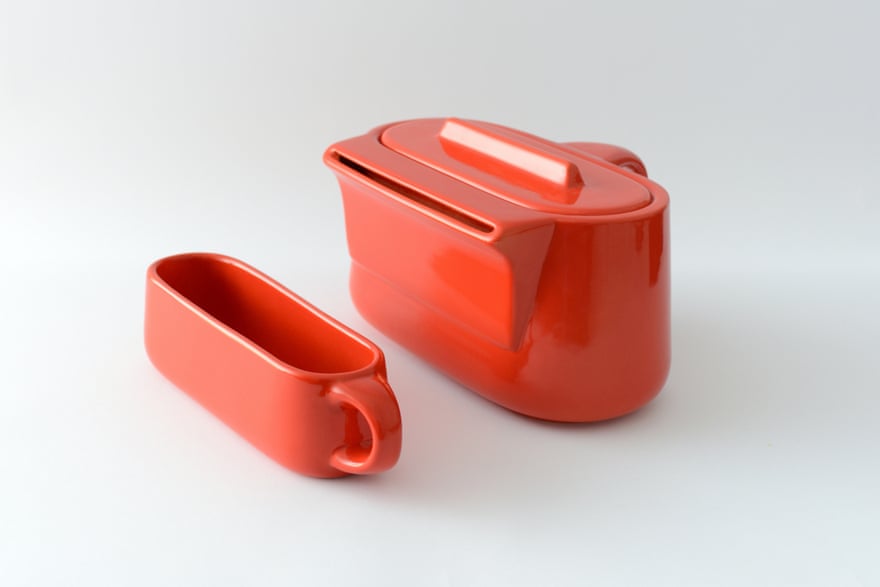
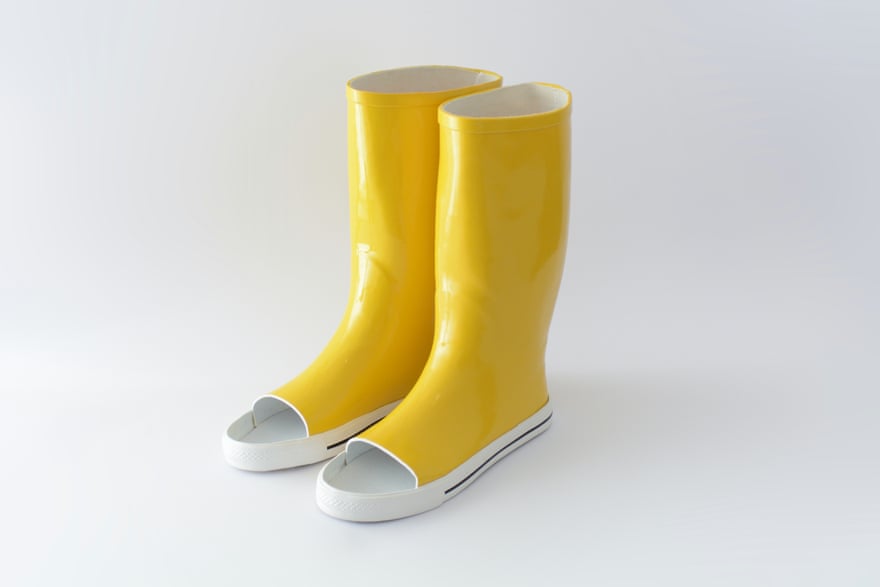
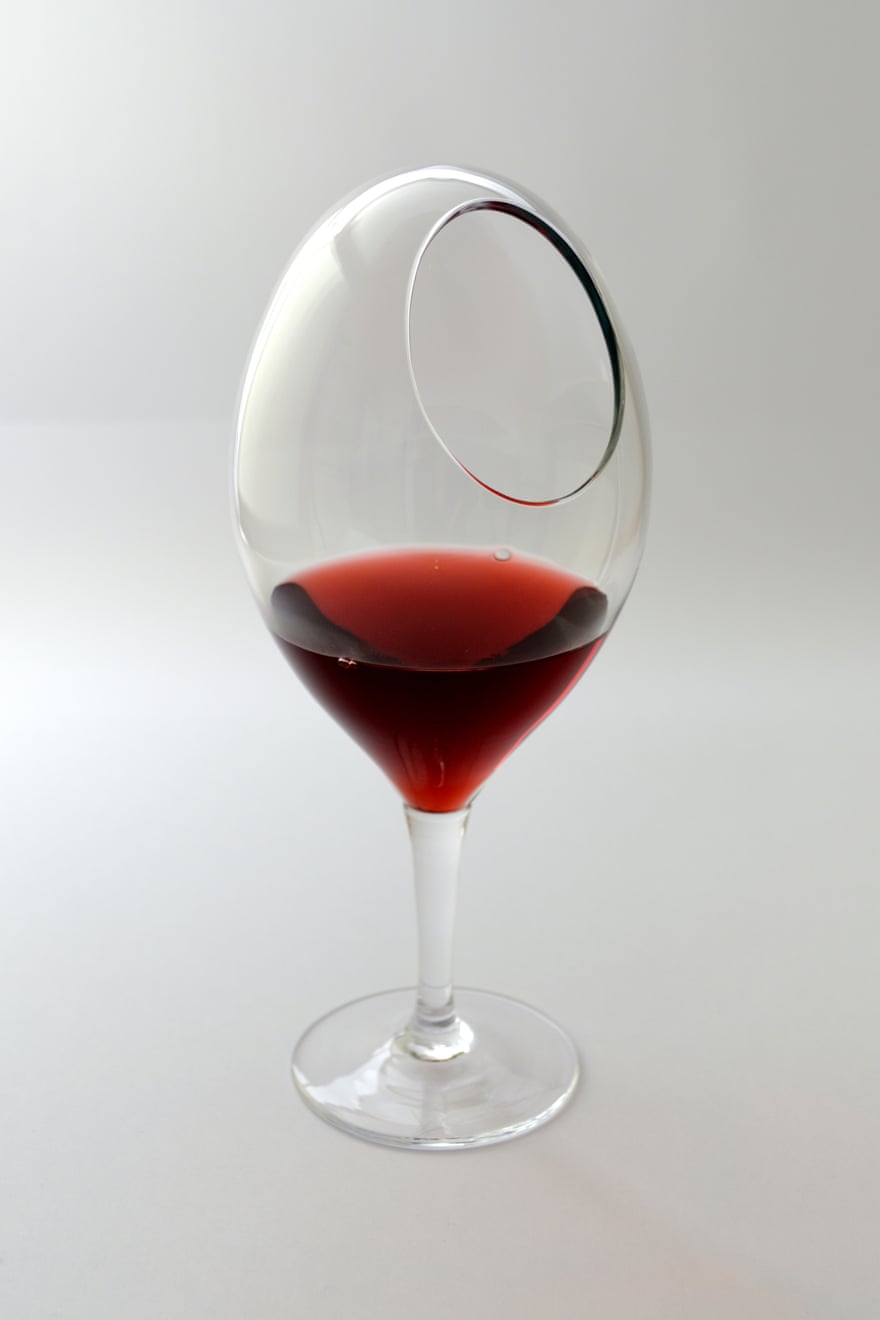
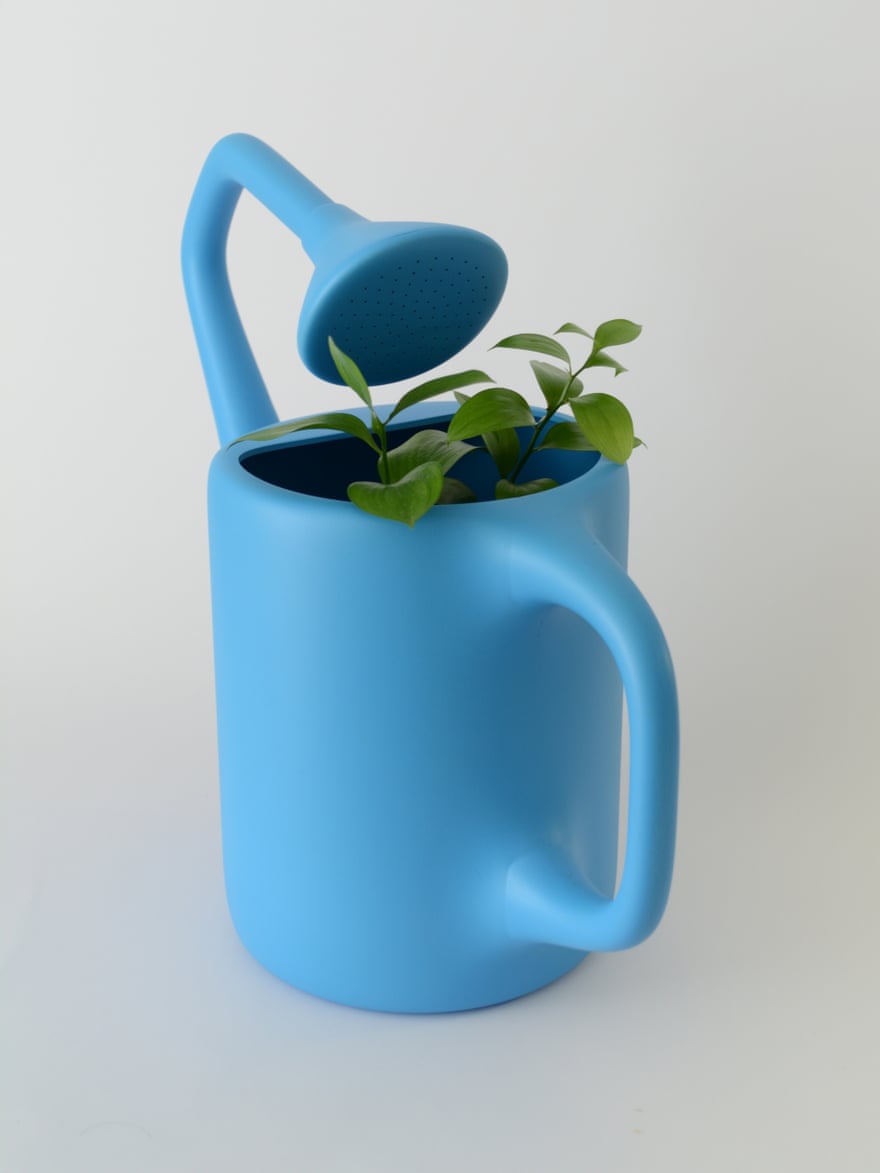
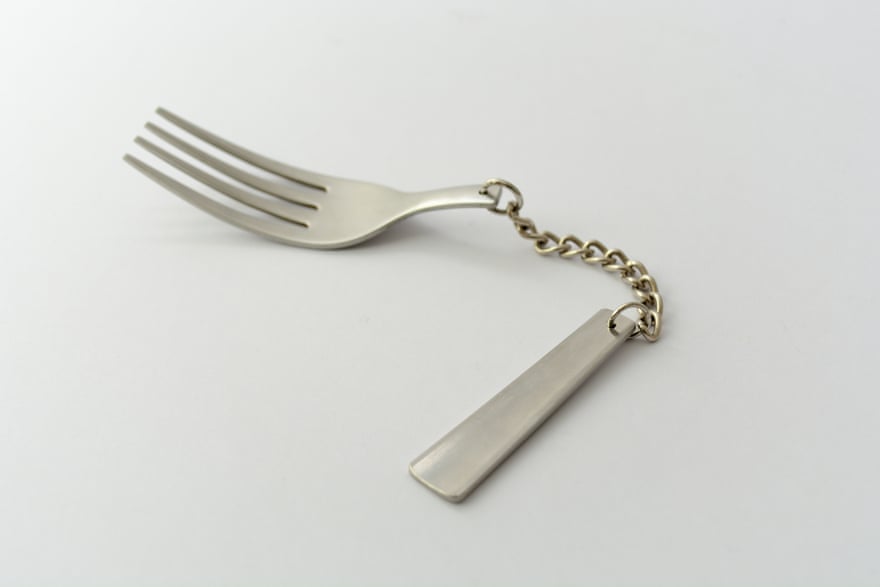
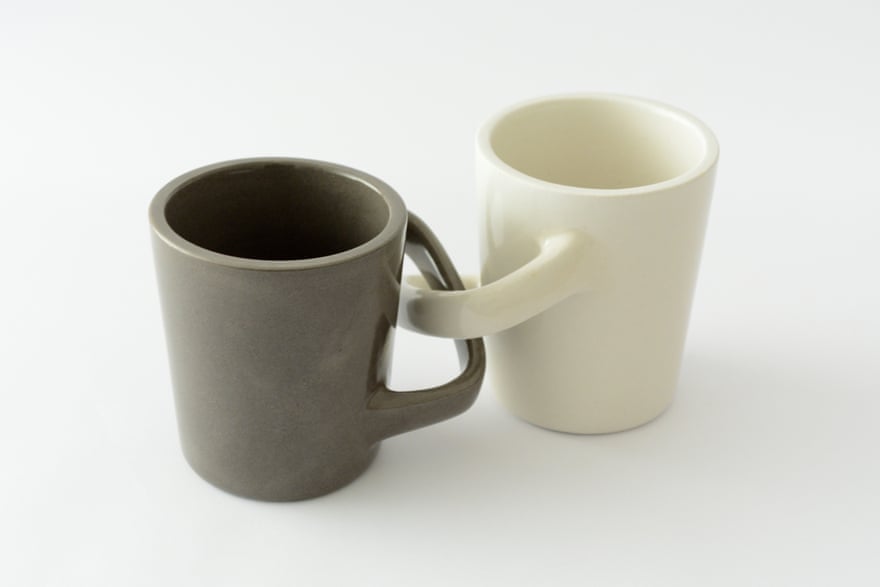
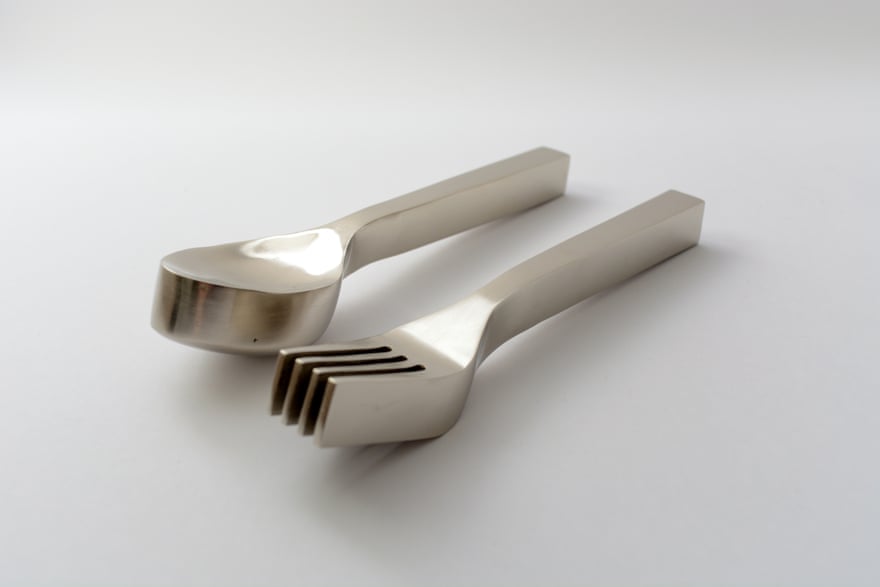
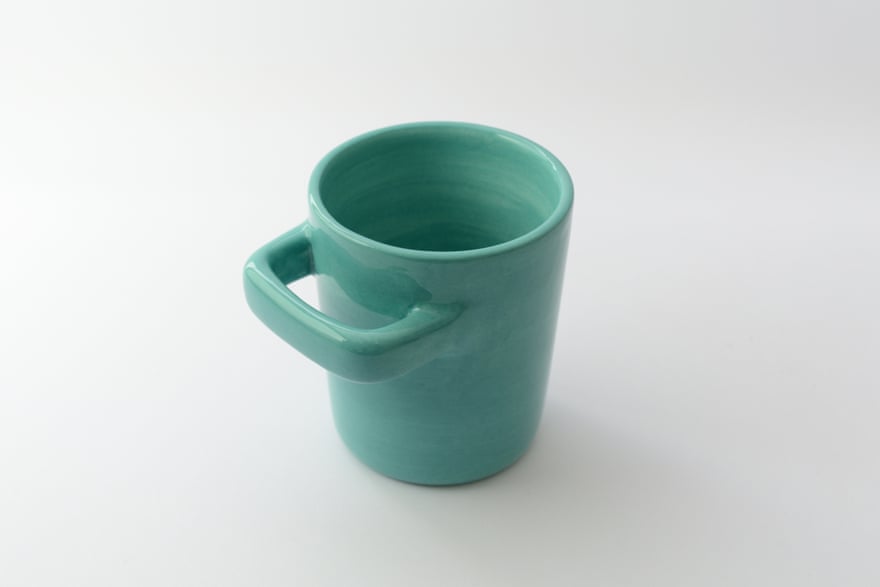
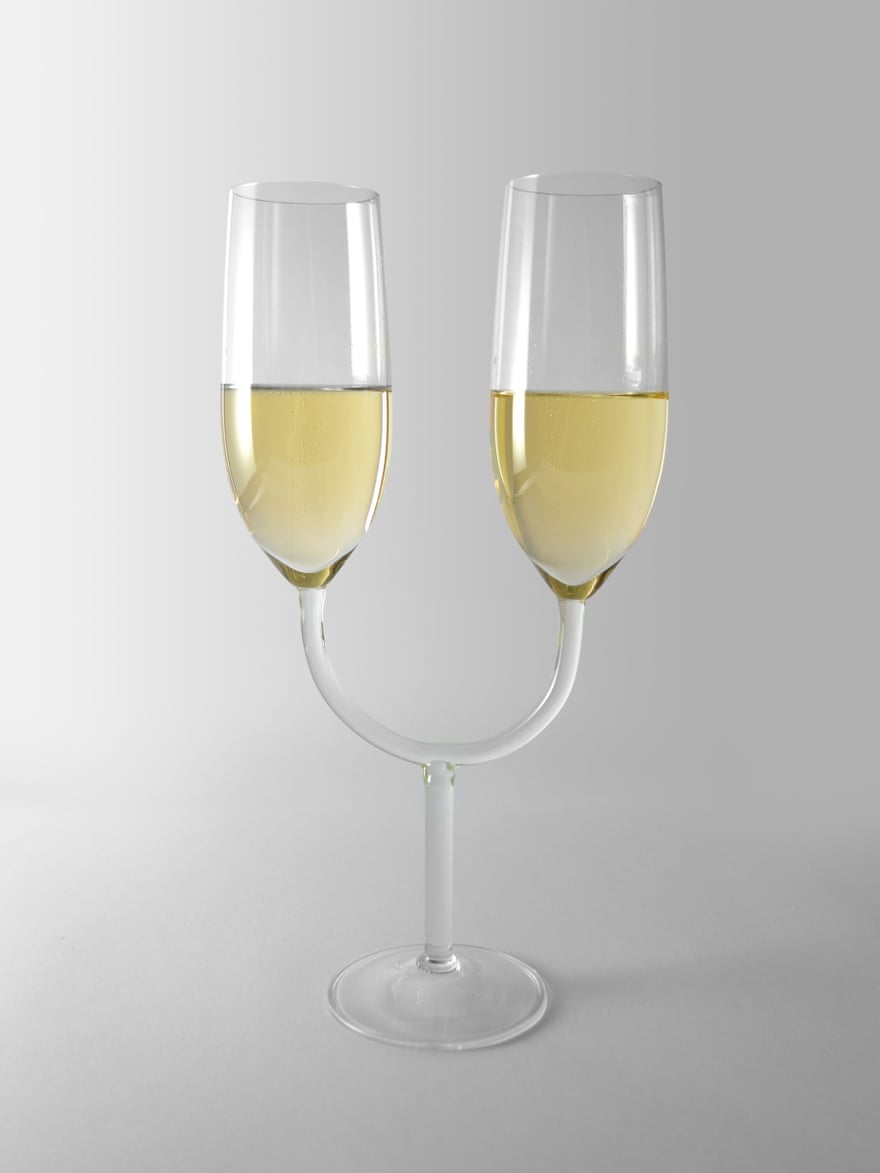
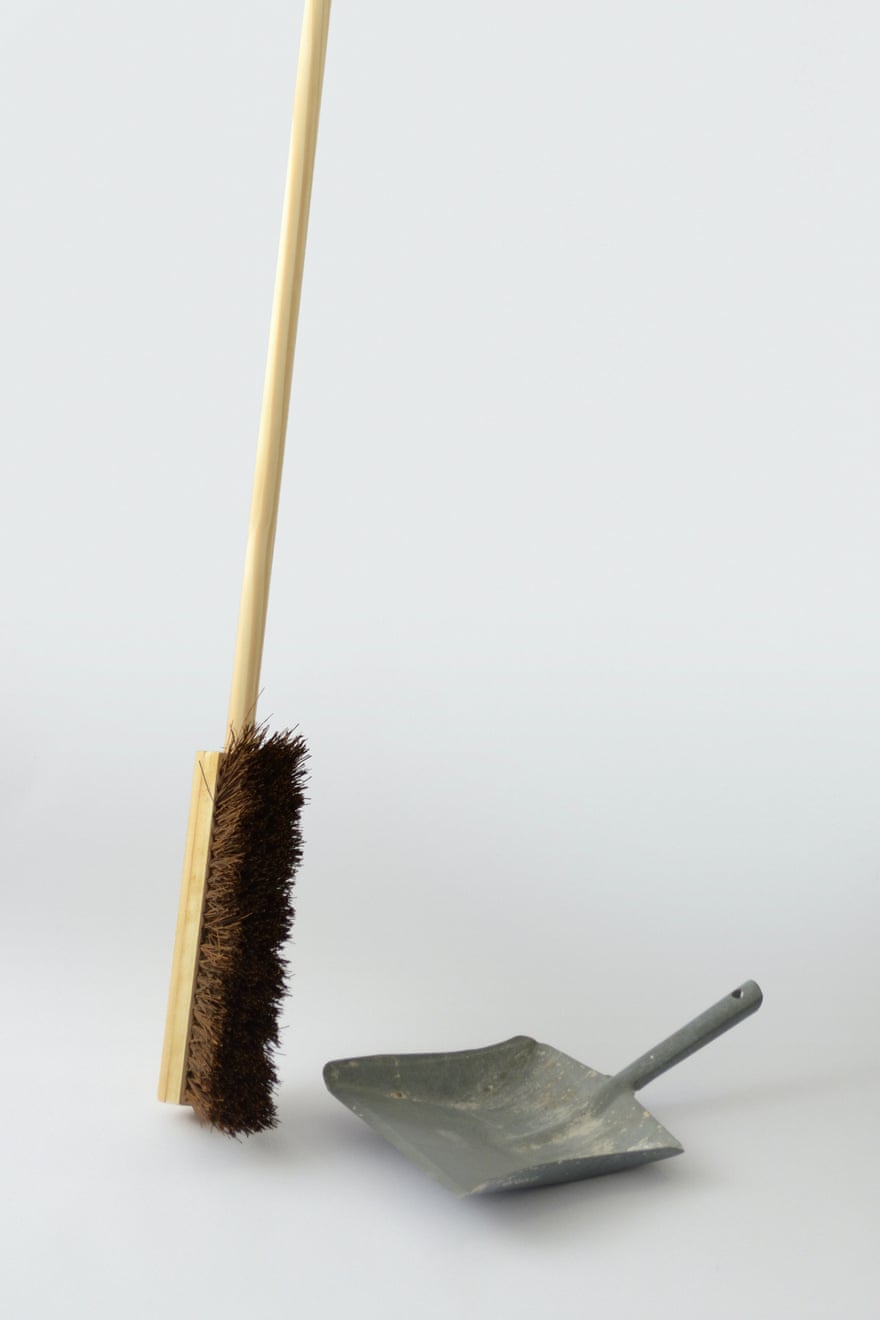
14 Likes
1 Shares










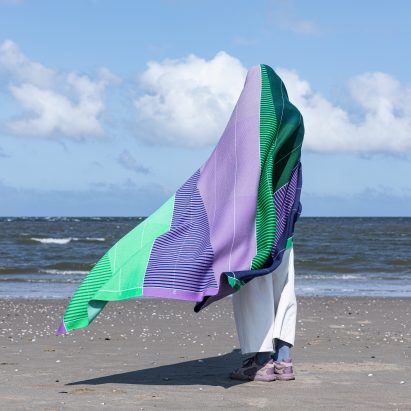
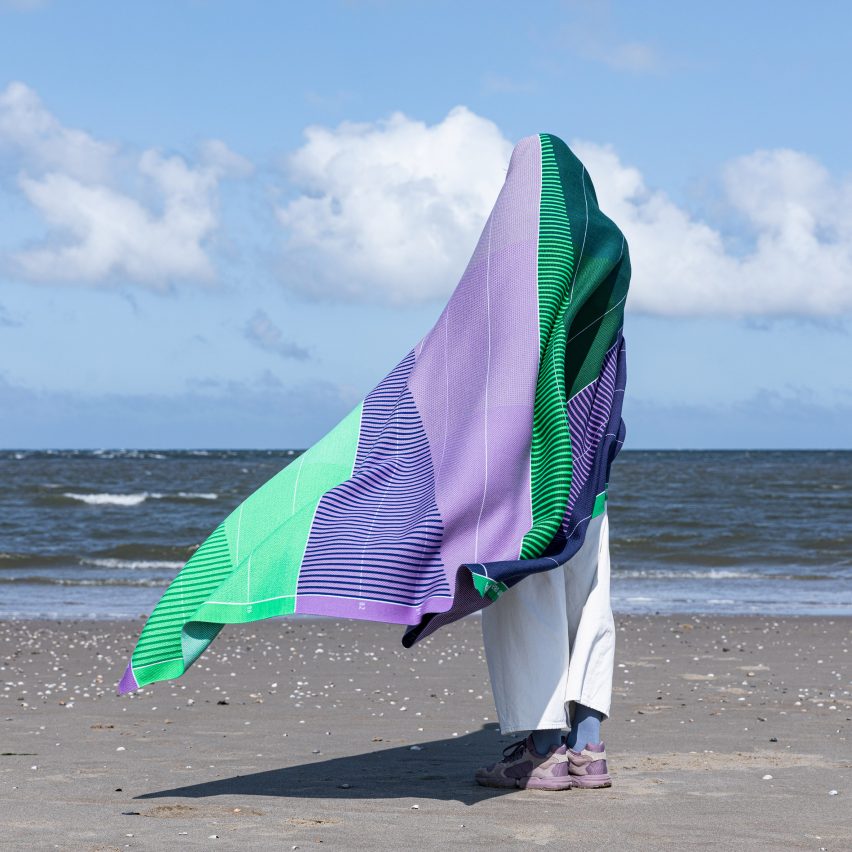
To raise awareness about environmental issues and provide a way to keep warm without turning on the heating, Dutch design studio Raw Color has created the Temperature Textiles collection, which is embedded with climate-change data.
The Temperature Textiles range features blankets, scarves and socks knitted with infographics about either temperate change, sea-level rise or greenhouse gas emissions.
Raw Color wanted to create pieces that draws attention to climate change and chose to focus on data because the studio regards it as an "essential visual" of the facts.
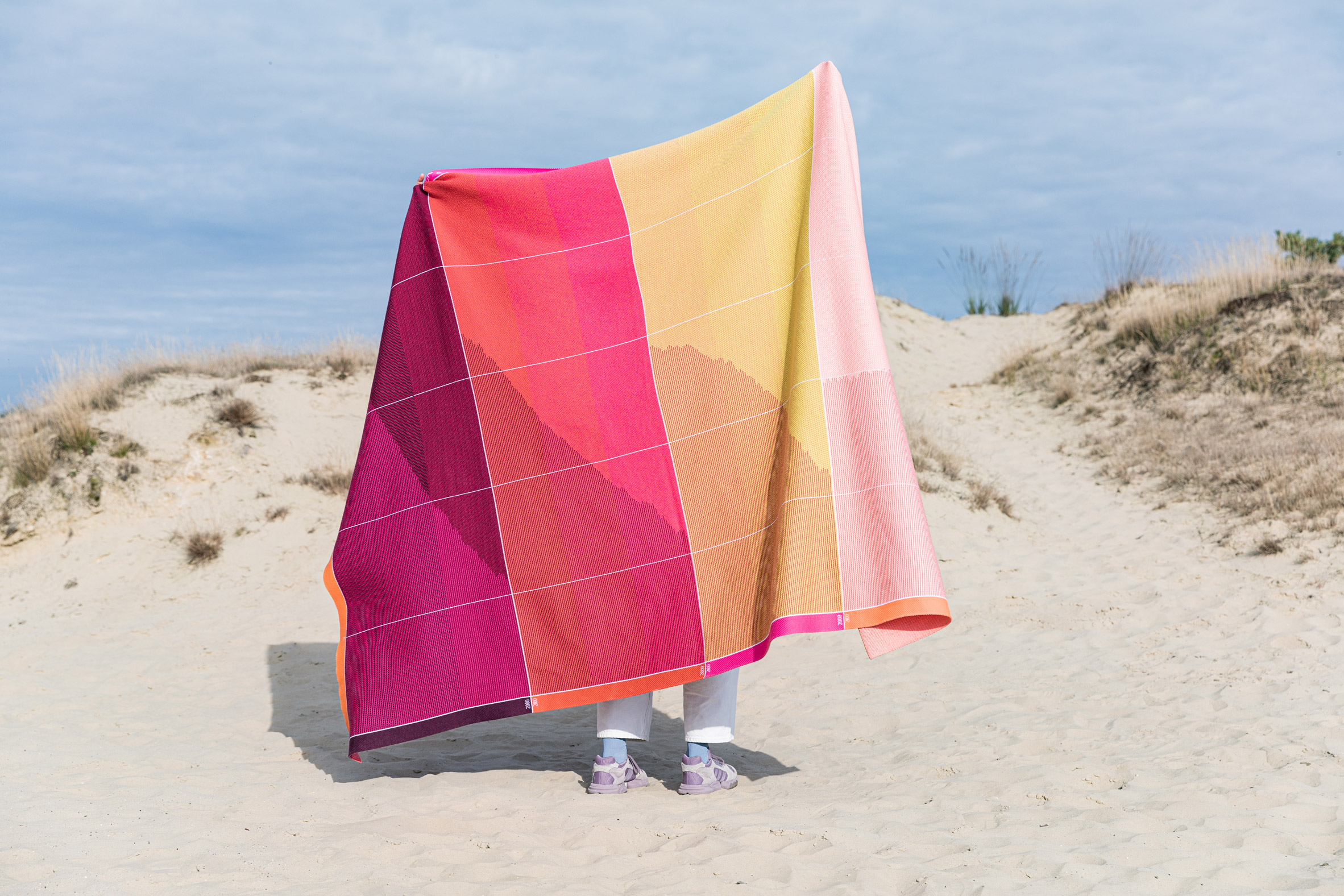 Raw Color's textiles include a flat-knit blanket with a pattern representing projected temperature rise
Raw Color's textiles include a flat-knit blanket with a pattern representing projected temperature rise
"It also has a graphic nature because data is represented by graphs, lines and colours," Raw Color co-founder Christoph Brach told Dezeen. "Therefore they are an ideal source of ingredients to transform into graphic patterns on textile."
Additionally, the studio liked the idea of textiles as a way to make information that people usually only view on a screen more tangible.
"Textile was important for us because it manifests the data permanently," said Brach. "On a screen, one sees it temporarily."
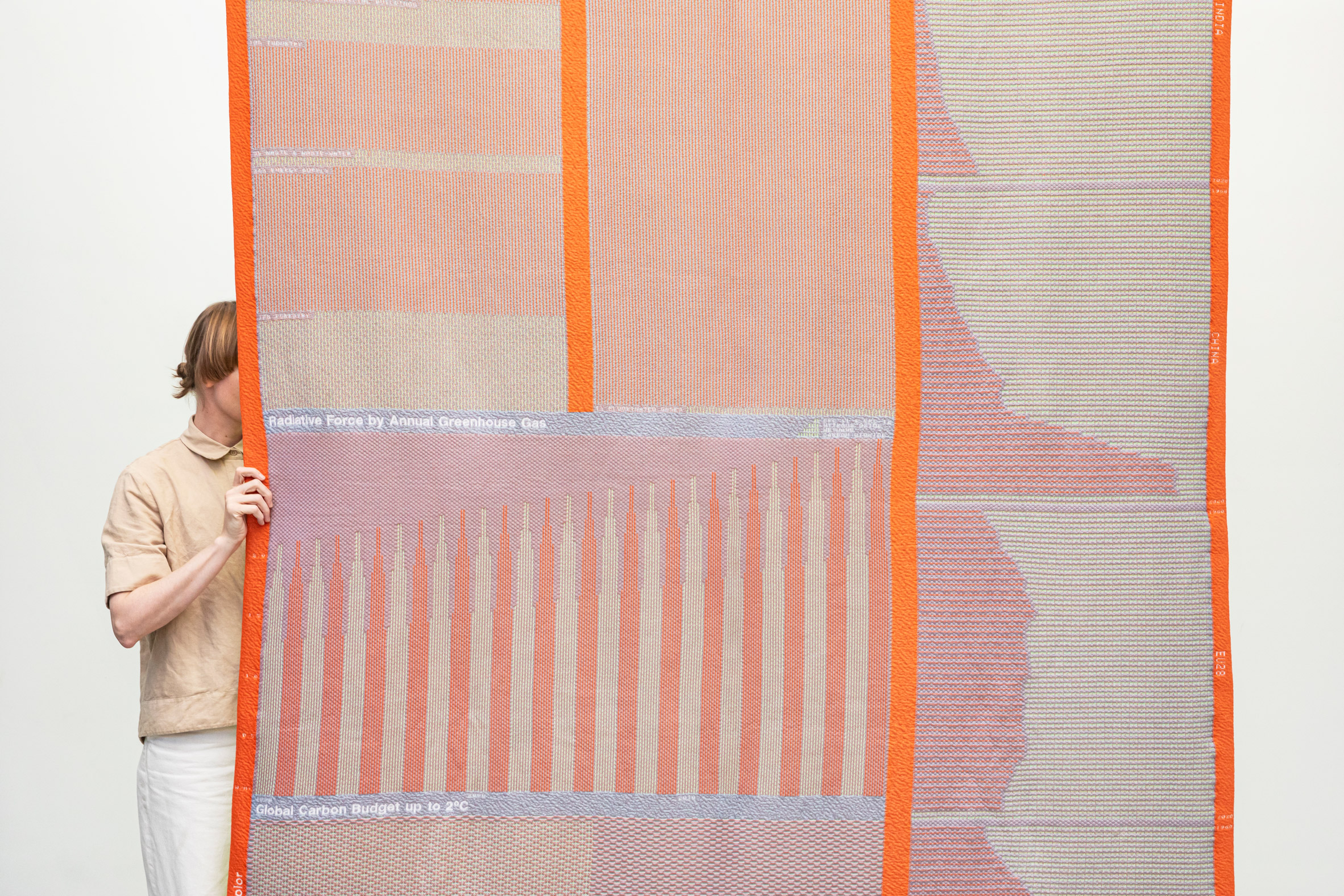 There are also double-knit blankets that gather several data sets into one piece
There are also double-knit blankets that gather several data sets into one piece
"Also, it is an object we can interact with," he continued. "A blanket can keep us warm and it can actively help to turn down the heating."
"And it is larger than a human when the data is displayed on the blanket, so it has more impact compared to a smaller screen display."
The largest items in the Temperature Textiles collection are blankets – three made using a flat knitting process and three using double knit.
 The patterns on this blanket represent projected emissions rise, while other designs focus on temperature and sea levels
The patterns on this blanket represent projected emissions rise, while other designs focus on temperature and sea levels
The flat-knit blankets feature the different emission scenarios modelled by the United Nations Intergovernmental Panel on Climate Change, with one design focusing on temperature, one on sea-level rise and the last on emission rise. Each line represents one year from 2000 until 2100.
The double-knit blankets have a more complex collage of visualisations as the process allows for two interlocked layers of fabric to be created at the same time, incorporating height differences and embossing effects.
[ 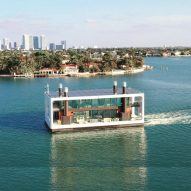
](https://www.dezeen.com/2022/03/07/climate-resilient-homes-roundups/)
The temperature-themed blanket, for instance, incorporates data on global warming by country and surface air temperature anomalies.
The socks and scarves, with their limited canvases, required the most selective approach to the data sets.
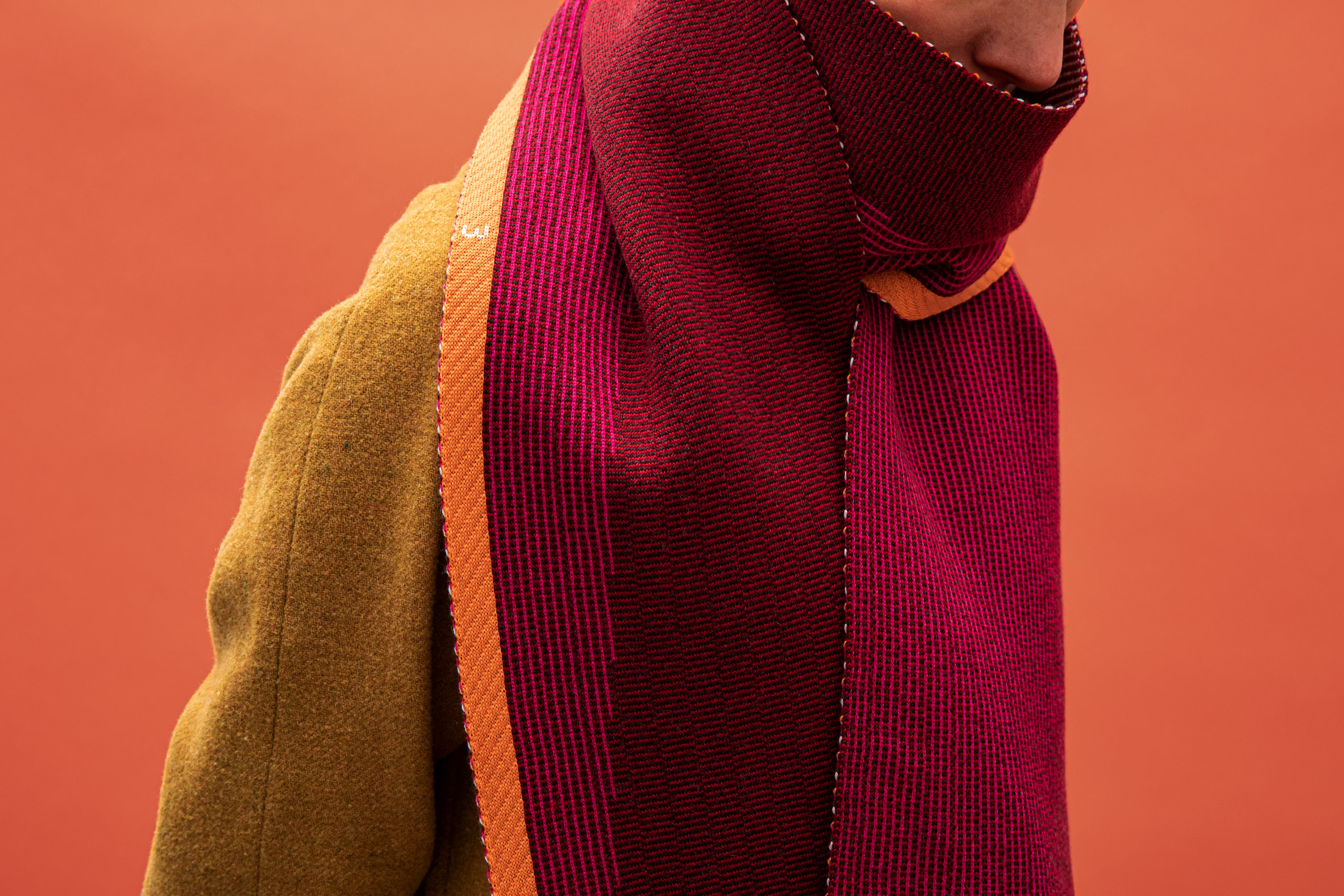 The collection also includes a scarf that records projected temperature rise
The collection also includes a scarf that records projected temperature rise
The socks visualise predicted sea-level rise as horizontal lines running along the back of the leg, similar to the lines of a ruler. But Raw Color could only fit one emissions scenario on the socks instead of the blankets' four – and could not use those with the most dynamic range.
"On the sock, we chose the most ideal scenario until 2050," said Brach. "Because everything else just did not fit on a regular sock. The highest highlighted line is 22 centimetres that you can feel on your ankle, the rise until 2050."
As well as taking advice from the Royal Netherlands Meteorological Institute on its use of data, Raw Color collaborated with TextielLab, the workshop of The Netherlands' TextielMuseum, on the design of the blankets, and design studio Knitwearlab on the scarves and socks.
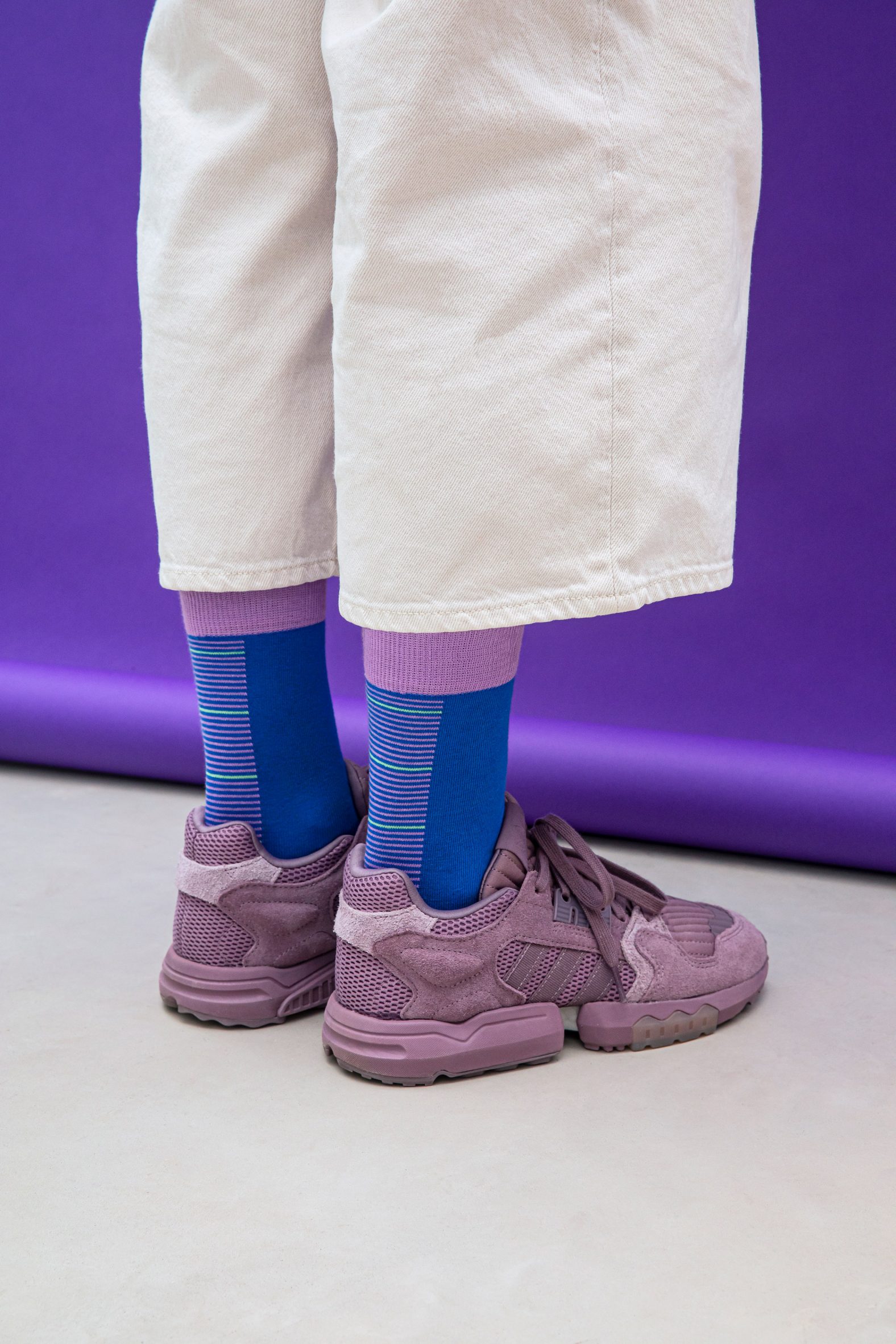 The collection's socks feature a mini visualisation of projected sea-level rise
The collection's socks feature a mini visualisation of projected sea-level rise
Raw Color used the experience to learn about the different types of knitting processes and emerged with a particular appreciation for flat knit, which has a colour expression that Brach describes as "pure and vibrant".
The designers liked that the flat-knit process produces no offcuts, there is little waste and the machine can be adjusted to the size of the piece. This is in contrast to weaving, which requires the use of the full width of the loom and for the edges to be cut off.
The studio was also able to use a single material, natural merino wool, for the flat knit, whereas this was not an option for the double knit, which is a polyester blend.
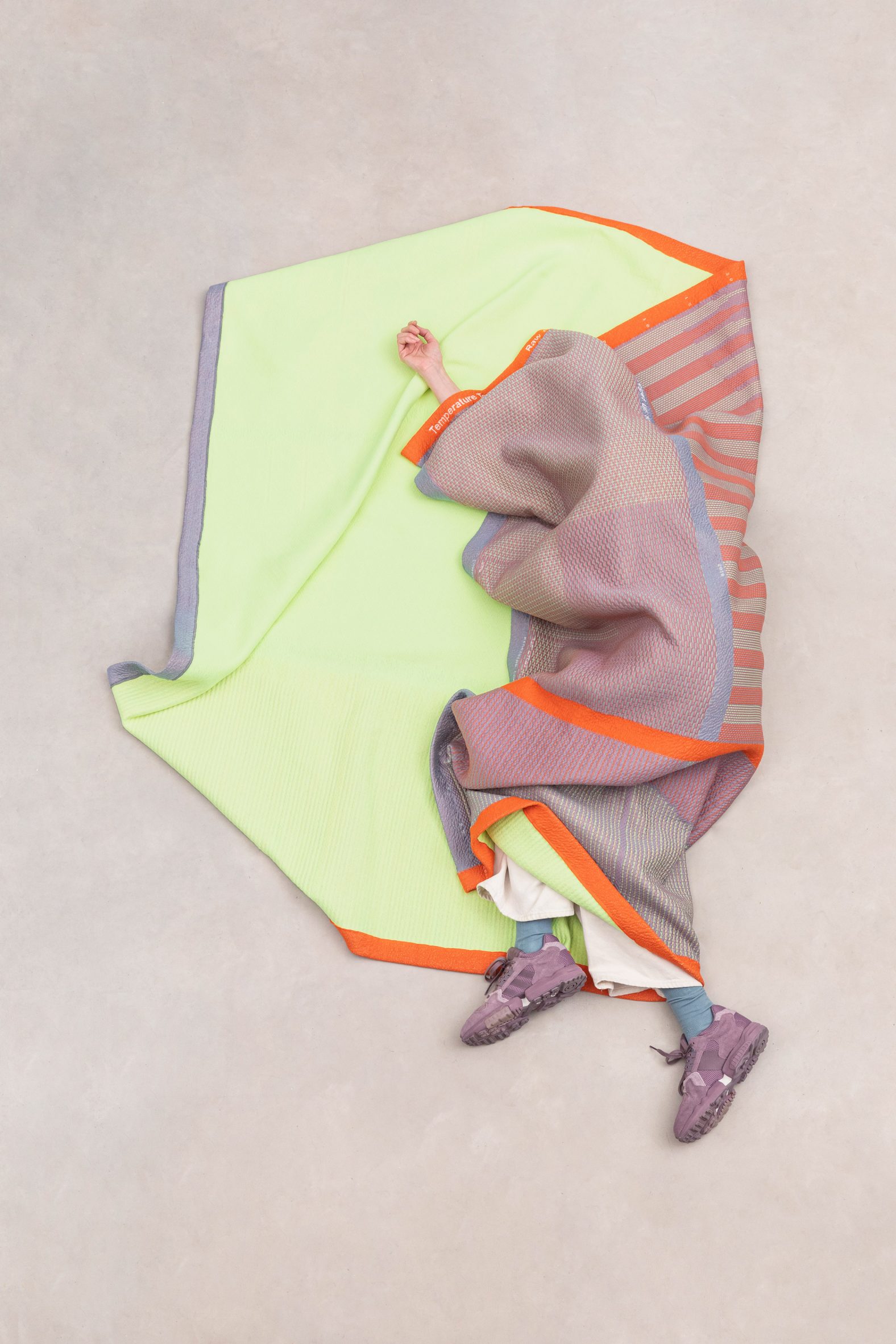 People can wrap themselves up in the Temperature Textiles to keep warm
People can wrap themselves up in the Temperature Textiles to keep warm
Founded by Brach together with Daniera ter Haar, Raw Color is a studio that blends different design practices to explore elements of colour.
The studio has previously held an exhibition of chromatic experiments at London's Aram Gallery and bleached coded messages into scarves using a customised printer.
The post Raw Color's Temperature Textiles wrap wearers in climate-change data appeared first on Dezeen.
#all #design #fashion #homeware #textiles #blankets #scarves #rawcolor #climatechange #datavisualisations
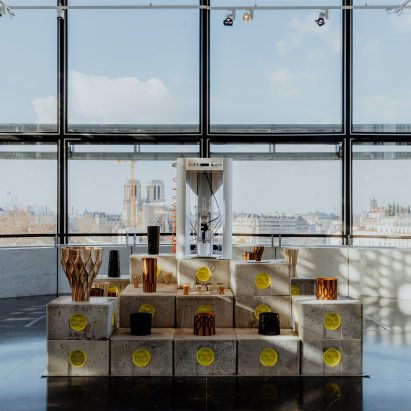
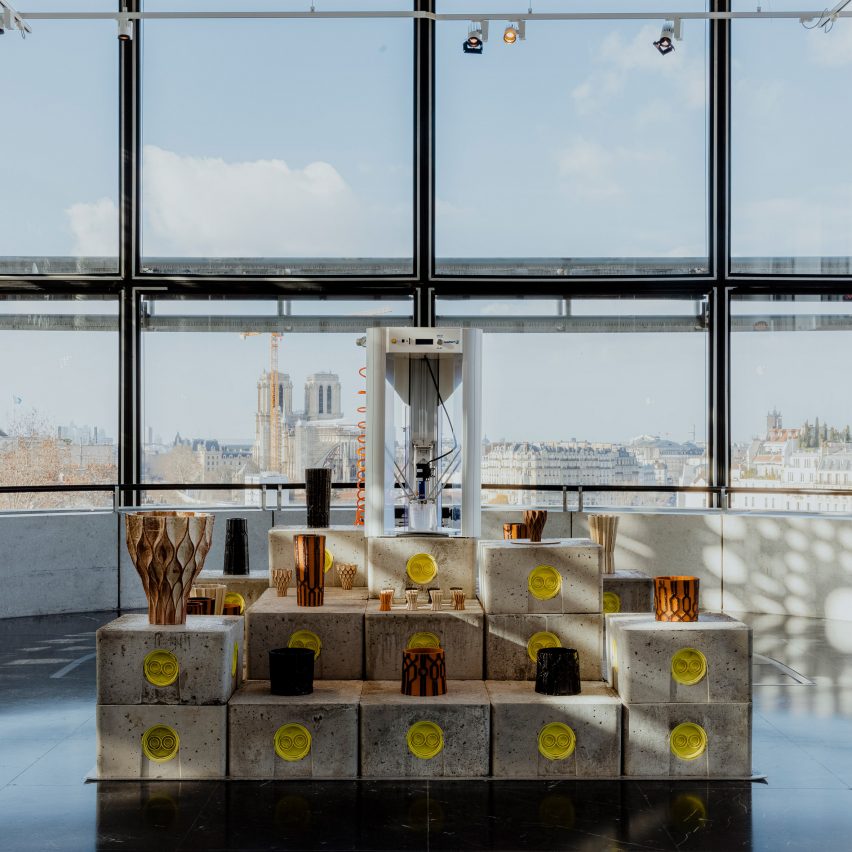
Paris-based homeware brand Trame has unveiled a collection of rugs and ceramics with pieces designed by architect Arthur Mamou-Mani as well as designers Amandine David and Wonmin Park that reference the historic Alhambra palace in Granada.
On show at cultural centre Institute Du Monde Arabe in Paris, the Tales of Imperfect Repetition collection references the tiles and patterns seen in the Alhambra palace in Spain, one of the world's most well-known examples of Islamic architecture.
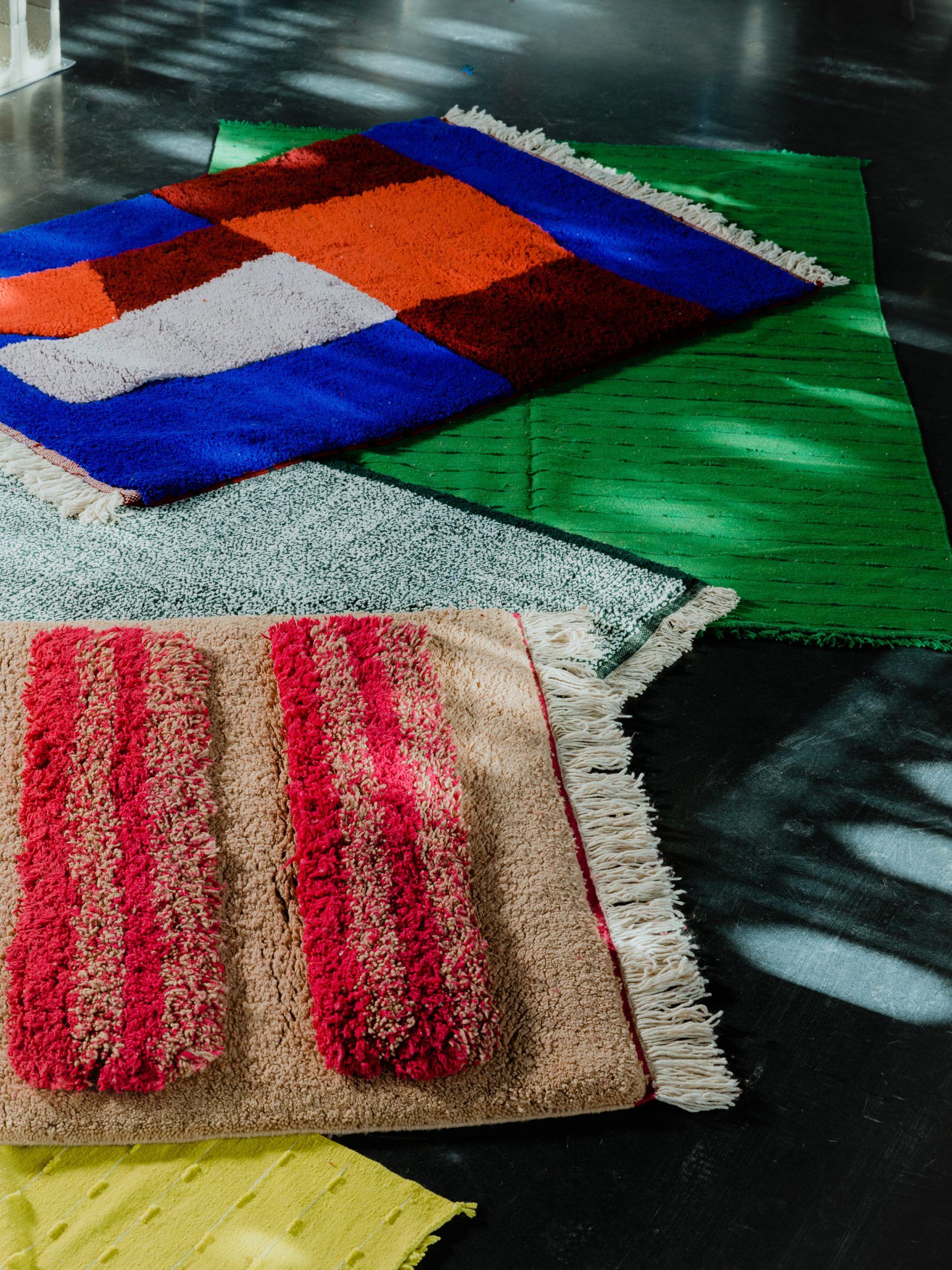 Trame has launched a collection of colourful rugs and ceramics
Trame has launched a collection of colourful rugs and ceramics
According to Studio Vedèt co-founder Valentina Ciuffi, who was responsible for the artistic direction of the exhibition, the designs celebrate Trame's love for Mediterannean style and Spanish architecture.
"The incredible architecture of the Alhambra in particular are at the origin of a collection that interweaves history and contemporaneity more evidently than ever before," Ciuffi told Dezeen.
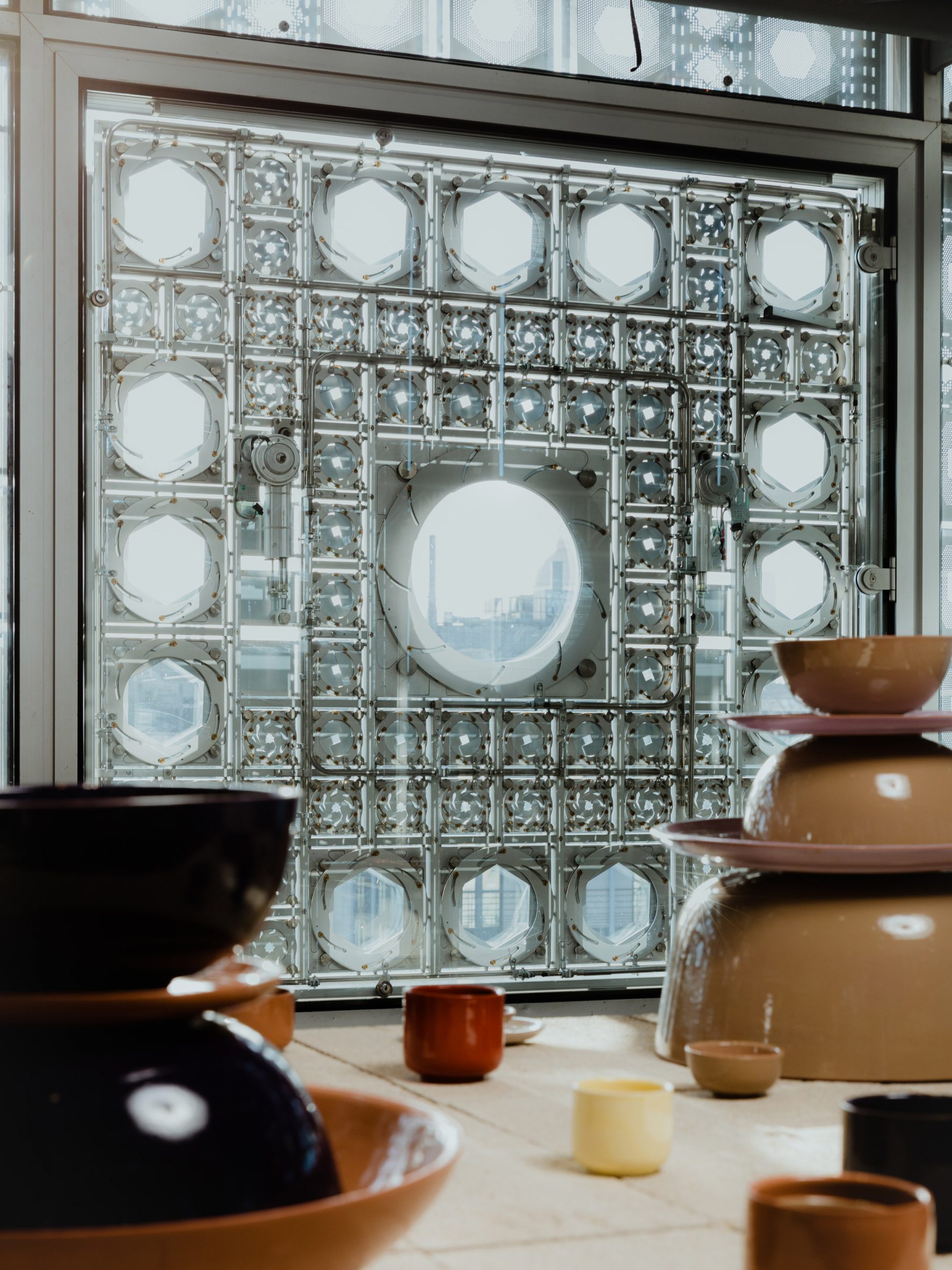 The items draw on the architecture of the Alhambra
The items draw on the architecture of the Alhambra
"Trame has set its eyes on the tiles which cover the walls of the ancient palace and on the three-dimensional transpositions of these infinite geometries, which give shape to the ceilings by ringing sequences of Muqarnas [ornamented vaulting]," she added.
The brand called on architect Mamou-Mani, Brussels-based designer David and Dutch designer Park to create pieces for the collection, which range from colourful tactile rugs with tassels to different-sized round vases.
As part of the creation process, all of the designers took a trip to the Alhambra, where they drew inspiration from its architectural forms and intricate interiors.
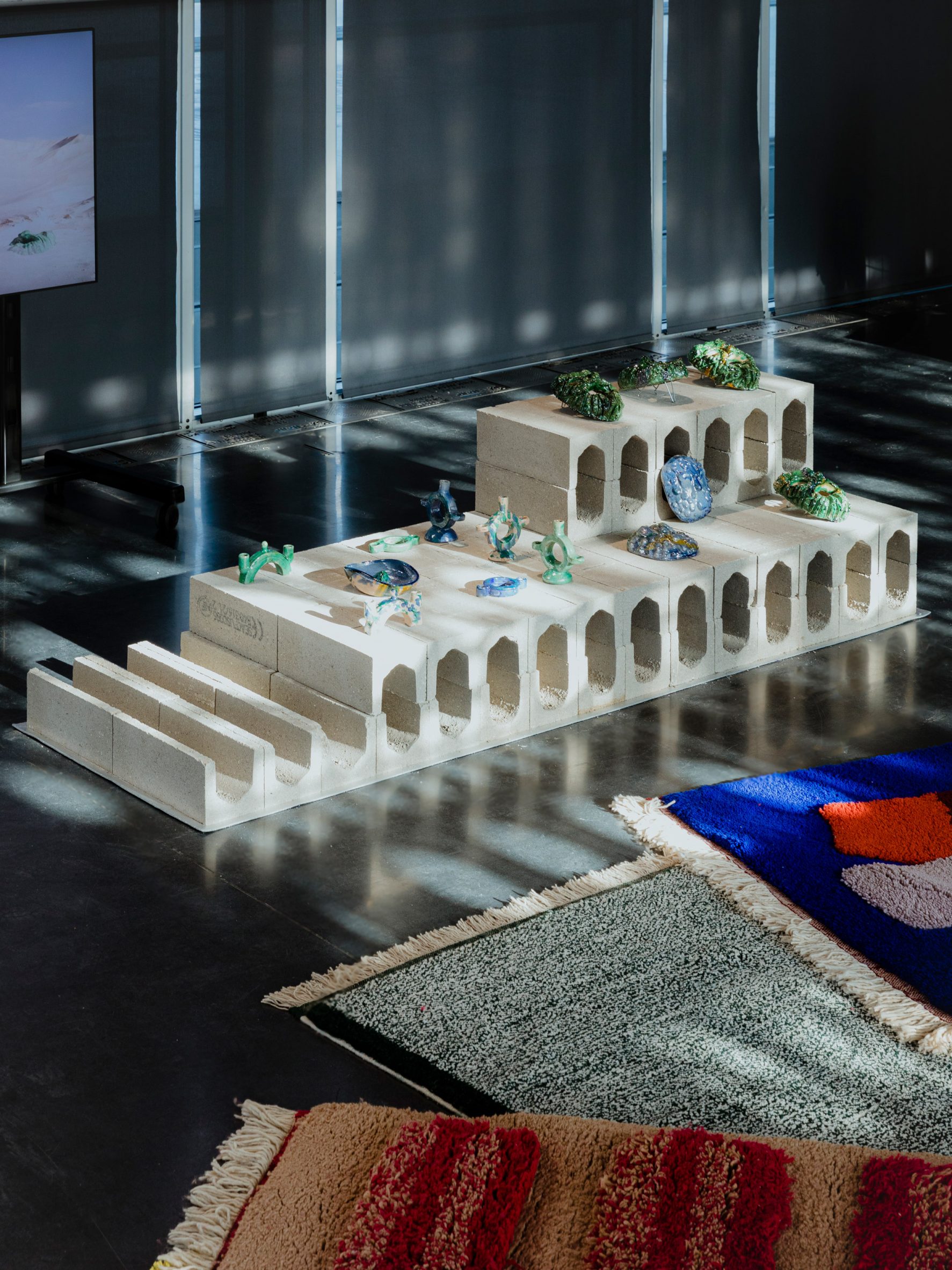 The collection features colourful rugs
The collection features colourful rugs
"While Islamic art made important mathematical discoveries much before scholars began formalizing them, one of the most fascinating aspects of its aesthetics is the infinite repetition of forms that creates mesmerizing, kaleidoscopic patterns," said Ciuffi.
"Indeed, it is the geometric and mathematical origin of these artistic expressions that act as a common thread," she added.
[ 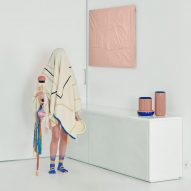
](https://www.dezeen.com/2020/01/23/trame-homeware-voyage-to-meknes-design/)
Among the items designed by Mamou-Mani are several stackable cups. The architect first created prototypes of the objects at his studio in London, where he worked with locally sourced red clay.
Like many of Mamou-Mani's past works, including a sand installation in Saudi Arabia, all of the designs were then 3D-printed before being finished with glazing by hand.
David created a selection of black vases for the collection, while Park contributed white vases and candleholders.
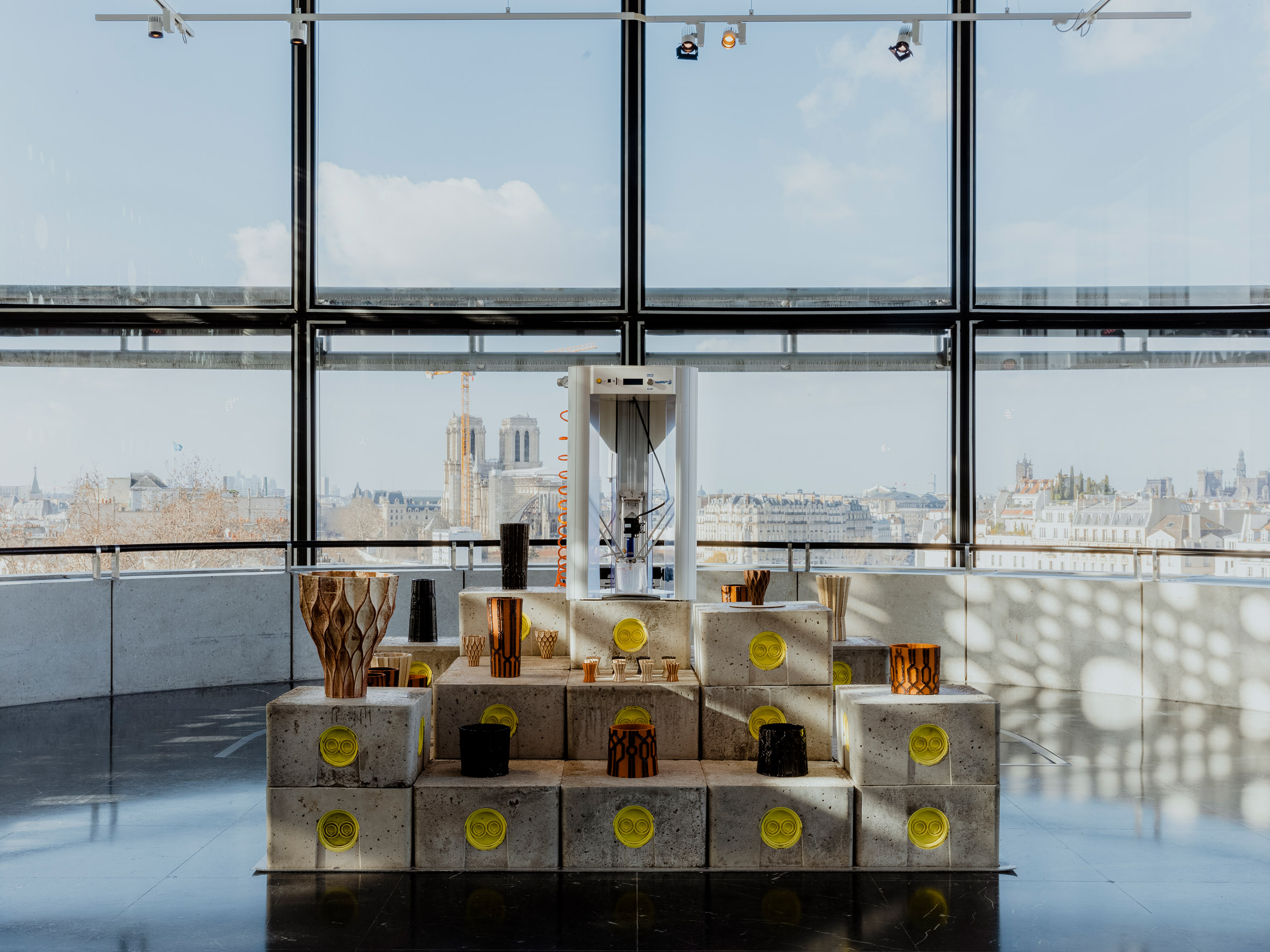 The ceramics were 3D-printed
The ceramics were 3D-printed
For Trame's launch, Studio Vedet decided to collaborate with the studio Space Caviar to create a space that reflects the Alhambra.
They were attracted to Institute Du Monde Arabe because of its similarities with the Alhambra.
"The Institute Du Monde Arabe, which is the synthesis between Arab and Western culture, was absolutely perfect for the preview of the new Trame collection," Ciuffi explained.
"Probably one of the best architectures signed by Jean Nouvel, the space is perfect both symbolically and aesthetically to recall the architecture of the Alhambra and the concept behind this collection," she said.
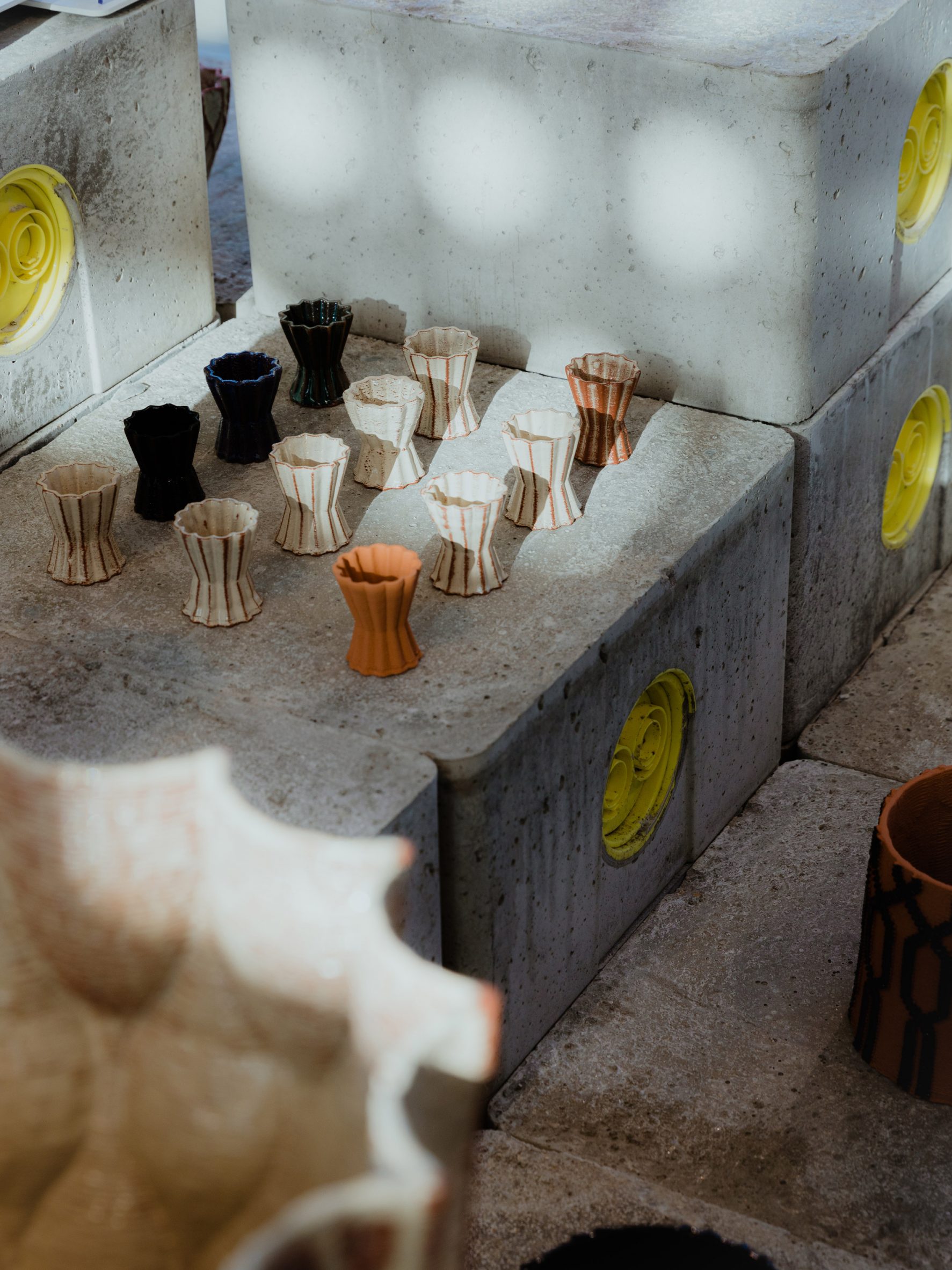 Tales of Imperfect Repetition is housed at The Institute Du Monde Arabe
Tales of Imperfect Repetition is housed at The Institute Du Monde Arabe
Other recent homeware launches include a collection of rugs by Studio Agne that were created using textile dyes extracted from byproducts from industrial processing, and a range of vibrant tapestries by Chromarama that can be experienced by individuals with different forms of colour vision deficiency.
The photography is byMattia Parodi.
The post Arthur Mamou-Mani creates 3D-printed cups for Trame's latest collection appeared first on Dezeen.
#all #design #products #homeware #paris #ceramics #rugs #arthurmamoumani #news #trame
![]()
![]()
Dezeen Showroom: Swedish brand Kasthall has updated its Icon woven rug collection of classic Häggå patterns with contemporary colour palettes.
Kasthall's Häggå family of designs consists of small-scale patterns that the brand considers timeless and compatible with any interior style, including Stripe, Dot and Post, a lattice-like motif.
![]() Kasthall has updated some of its classic Häggå pattern family, including Post, which is now available in colours including Redwood Haze
Kasthall has updated some of its classic Häggå pattern family, including Post, which is now available in colours including Redwood Haze
The updates to these rug designs feature colours informed by nature and shifts in seasons, with bolder contrasts to emphasise the pattern.
"Today you want to distinguish different intricate patterns in your rugs and preferably already at a first glance," said Kasthall head of design Lena Jiseborn. "It shows the rug's solid craftsmanship and quality."
![]() The new colours for Dot Icon include Raw Umber and other nature-inspired hues
The new colours for Dot Icon include Raw Umber and other nature-inspired hues
The new Stripe Icon palette consists of soft and warm colours with adjacent tones designed to create the illusion of a relief, with hues including Straw Yellow, Green Field and Griffin Grey.
Dot Icon now features colours reminiscent of burnt terracotta and silver treetops, while Post Icon takes its cues from the meeting of nature and cities, with colours such as Evening Blue and Redwood Haze.
Product: Icon
Brand: Kasthall
Contact: monika.mellen@kasthall.se
Dezeen Showroom
Dezeen Showroom offers an affordable space for brands to launch new products and showcase their designers and projects to Dezeen's huge global audience. For more details emailshowroom@dezeen.com.
Dezeen Showroom is an example of partnership content on Dezeen. Find out more about partnership contenthere.
The post Häggå Icon rugs by Kasthall appeared first on Dezeen.
#kasthall #rugs #all #design #homeware #donotshowonthehomepage #dezeenshowroom #accessories #homewaredesign
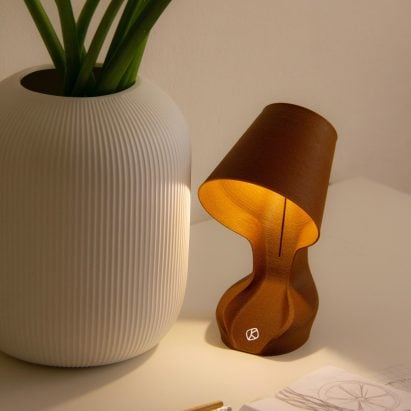
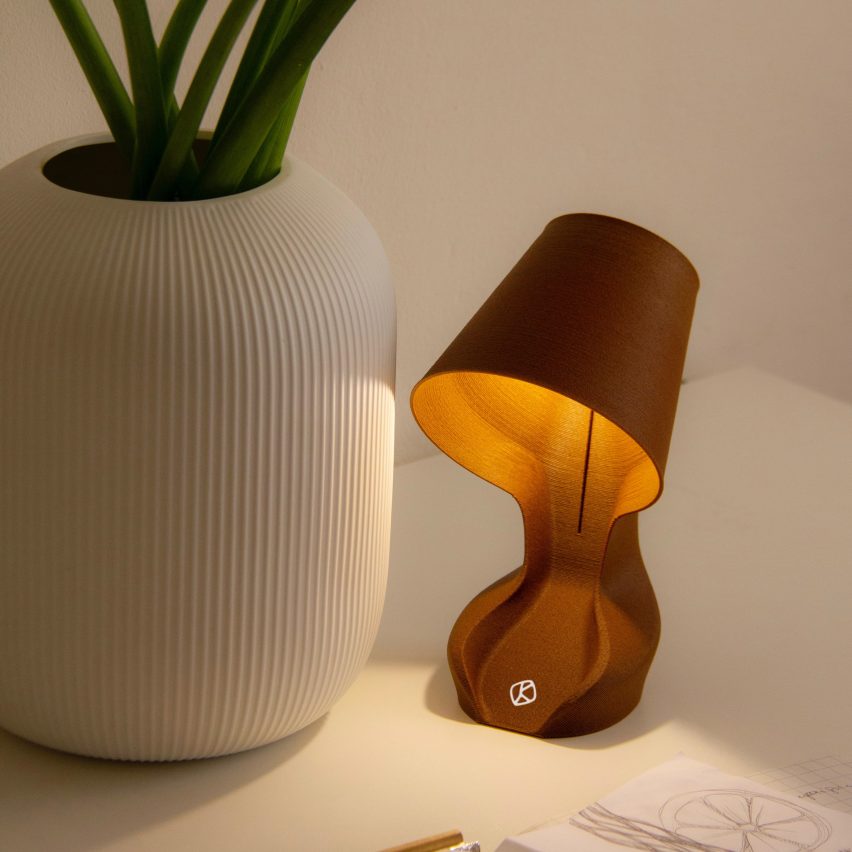
Milan-based start-up Krill Design has 3D printed Sicilian orange peels into a tactile lamp that can be composted along with organic household waste.
The designers at Krill Design turned to orange peel to create the lightweight lamp because of the citrus fruit's ubiquity in Sicily, Italy.
Each lamp is made from the discarded peels of two or three oranges sourced from a family-owned food producer in the Messina province of Sicily.
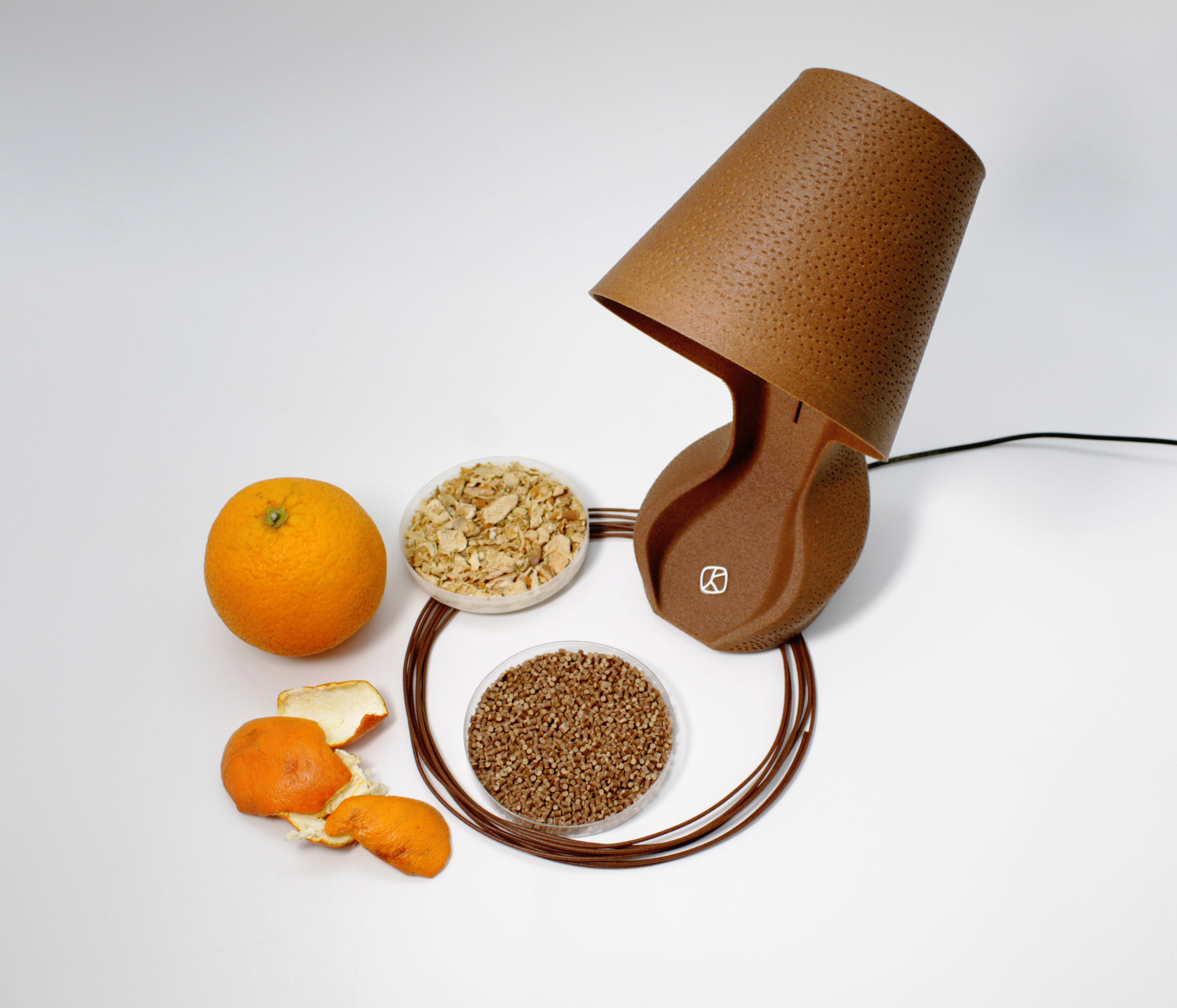 Top: each lamp is made from two or three oranges. Above: Ohmie retains the natural bumpy feel and smell of oranges
Top: each lamp is made from two or three oranges. Above: Ohmie retains the natural bumpy feel and smell of oranges
"We needed a material that would not run out and given that Sicily alone produces about 3 per cent of global oranges, that allows us to stock up on the peels and be able to always produce Ohmie," Krill Design told Dezeen.
"We are keen on promoting a local and fully Italian supply and production chain. Oranges are one of the many Italian produces renowned worldwide and we believe it is a nice symbol."
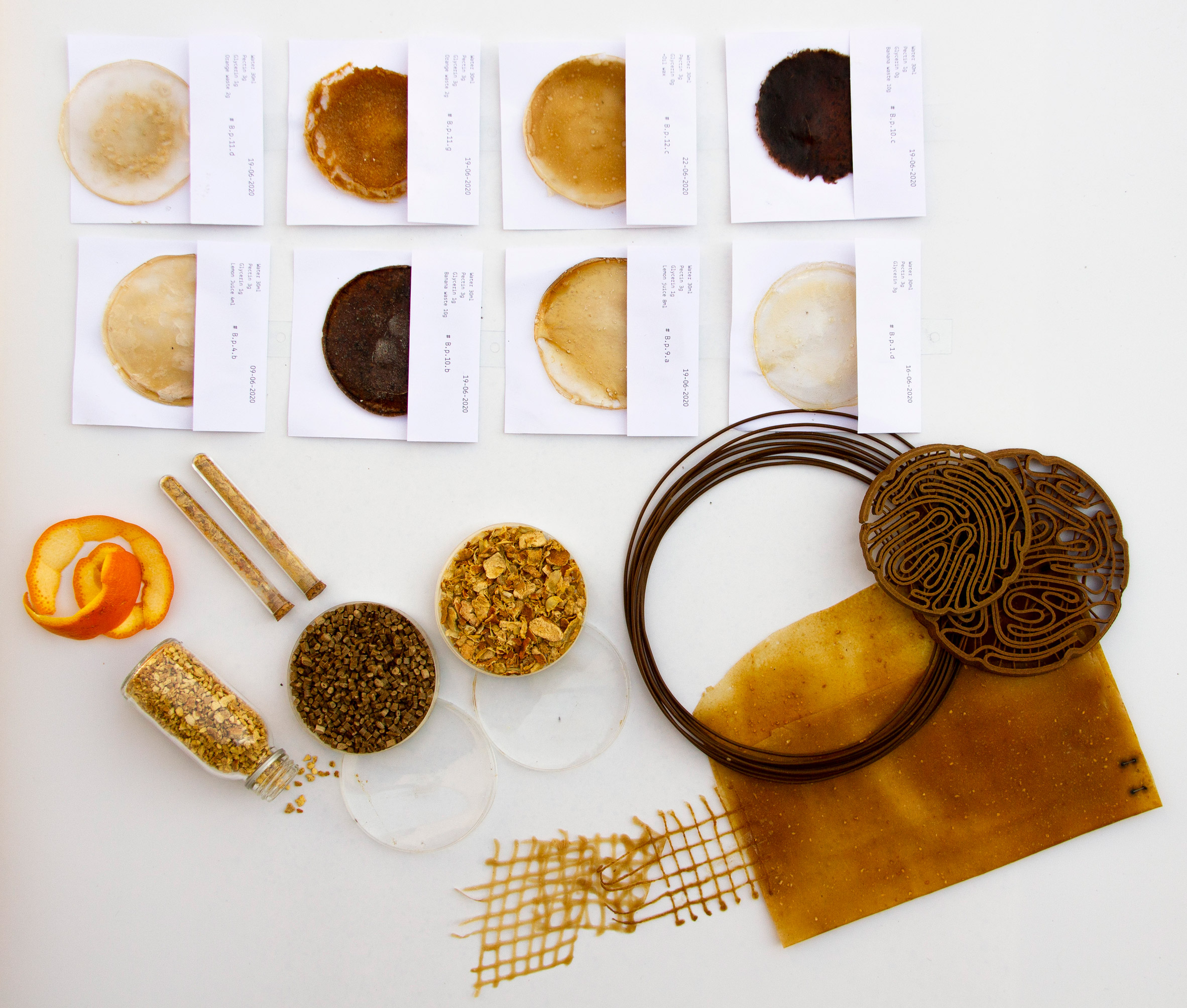 Ohmie is made from locally sourced Sicilian oranges
Ohmie is made from locally sourced Sicilian oranges
From its patterned surface to its orangey smell and vibrant colour, the 23-centimetre-tall lamp was designed to reflect its origins.
The designers hope the lamp demonstrates how food waste can be successfully repurposed into an "eco-design product that is both "beautiful and functional".
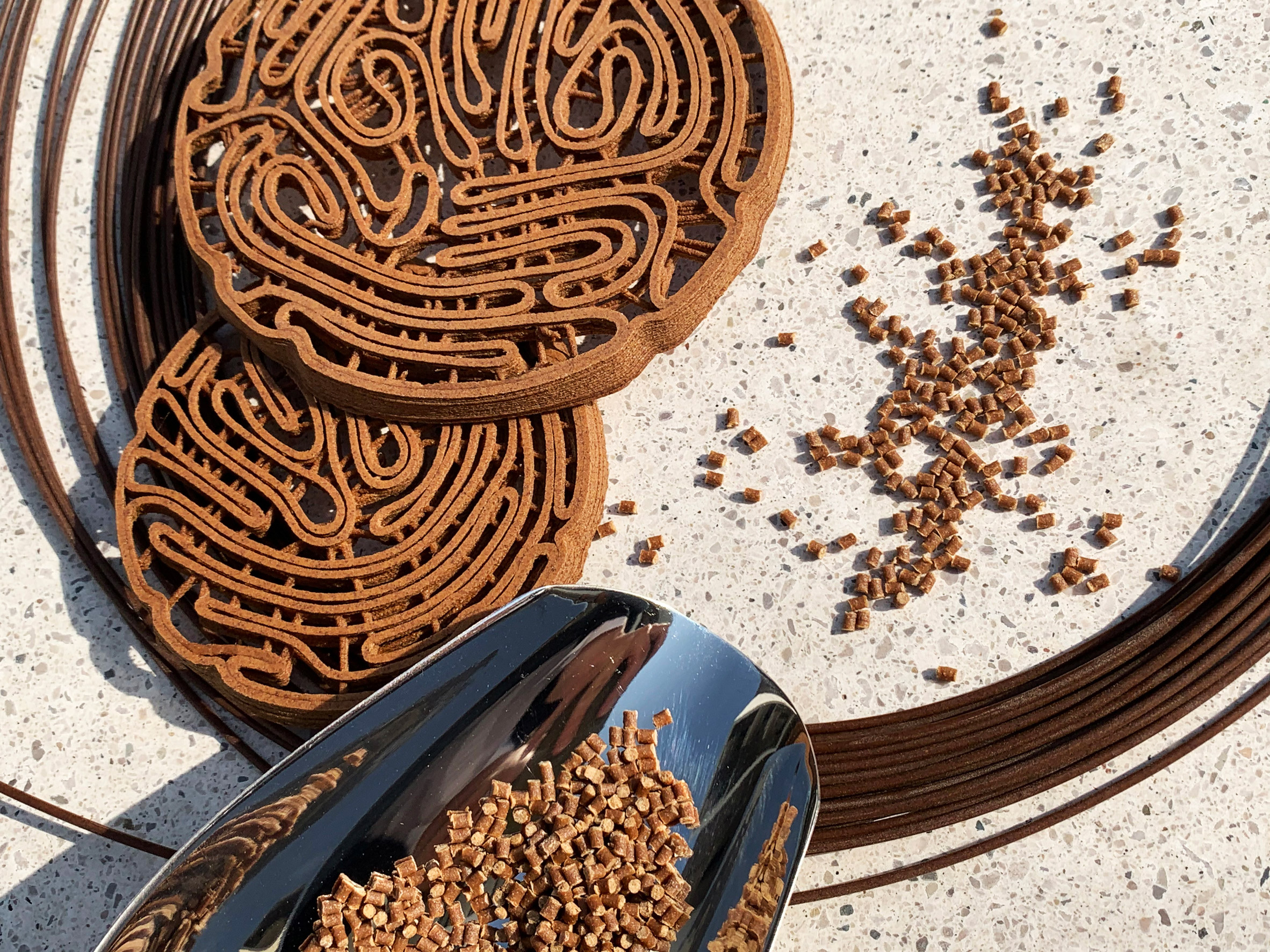 The peels are ground down and combined with starch before being 3D printed
The peels are ground down and combined with starch before being 3D printed
After use, the Ohmie lamp can be broken down by hand into smaller pieces before being thrown away with the household's organic waste, the studio explained.
"The orange lamp, at the end of its life, can simply be broken into fragments and tossed with the household's organic waste to be disposed of in composting facilities and be turned either into compost or biofuel depending on local dispositions," said Krill Design.
Currently, the remains have to be sent to a composting facility instead of decomposing straight into nature.
"We decided to develop a material that, for now, would only decompose in industrial facilities for performance and durability reasons, but we would like to research more and achieve a biopolymer that can be durable and sturdy as well as easy composted in nature or in an at-home compost," it added.
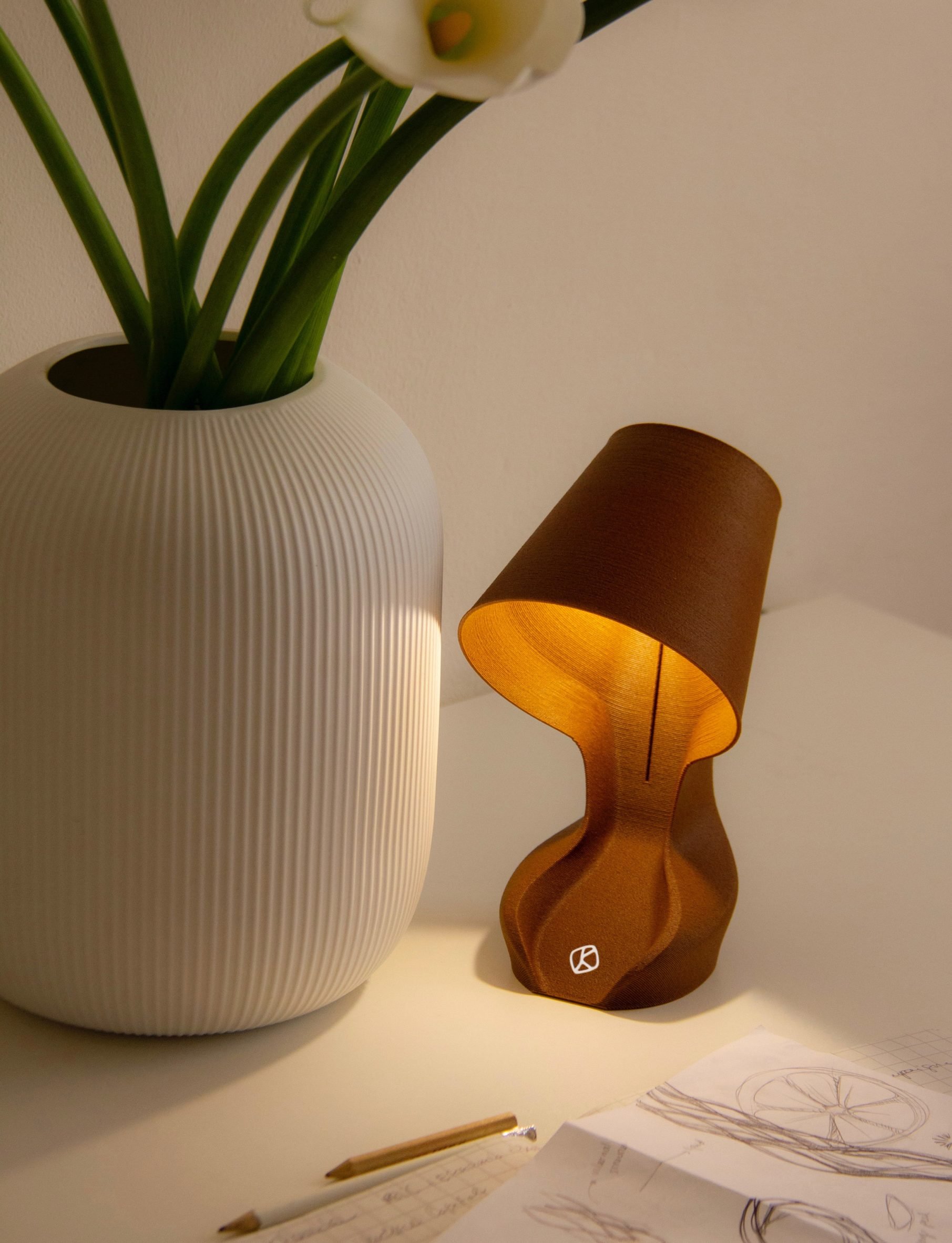 The light can be broken down and composted in a composting factory
The light can be broken down and composted in a composting factory
Krill Design used 3D-printing techniques to "avoid any form of waste during production". The orange peels are ground down and combined with vegetable starch before being 3D printed.
"Once the peels have arrived in our office in Milan they are dried – the organic scraps need to have moisture level below 4 per cent – ground to a fine powder and sifted to make sure all grains are fine enough," the studio said.
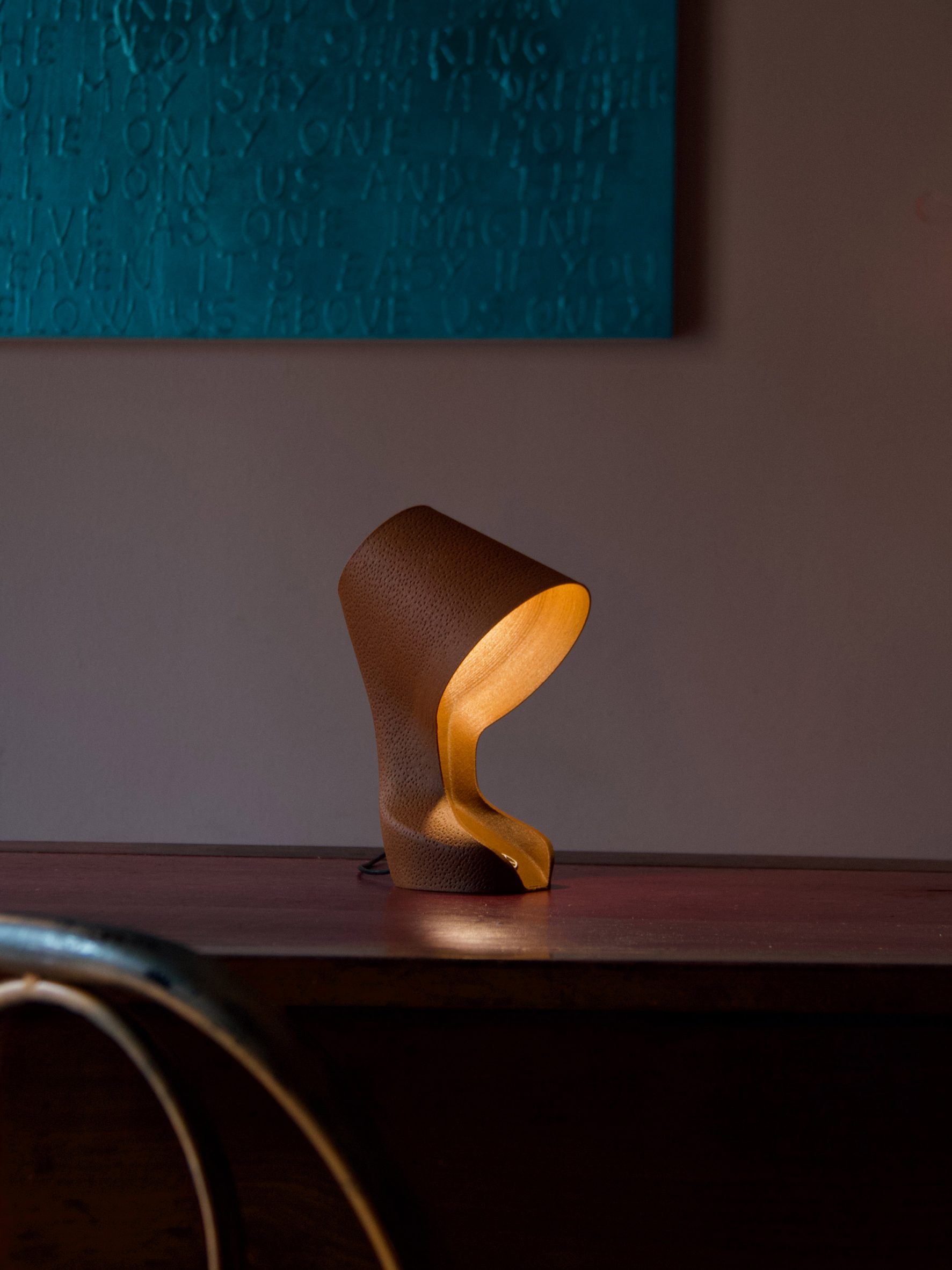 The designers hope to show how food waste can be effectively repurposed
The designers hope to show how food waste can be effectively repurposed
The peel powder is then sent to a compounding facility where it is added to a biopolymeric vegetable starch base. Afterwards, the orange biopolymer is produced in the form of pellets.
This is the only part of the production phase that is outsourced, the brand said.
"Only this phase of the process is outsourced as the machinery needed is extremely bulky and expensive," Krill Design explained.
"After this, we extrude the orange filament from the pellet and use it within a 3D printer to bring Ohmie to life."
Fruits have been used in a number of designs. Copenhagen-based brand Beyond Leather combined apple juice leftovers with natural rubber to create Leap, a plant-based alternative to leather, while Júlia Roca Vera has created a cosmetics line made from discarded fruits.
Photography is byKrill Design.
The post Ohmie is a 3D-printed lamp made from orange peels appeared first on Dezeen.
#all #lighting #design #products #lamps #productdesign #homewaredesign #3dprinting #homeware #compostablematerials
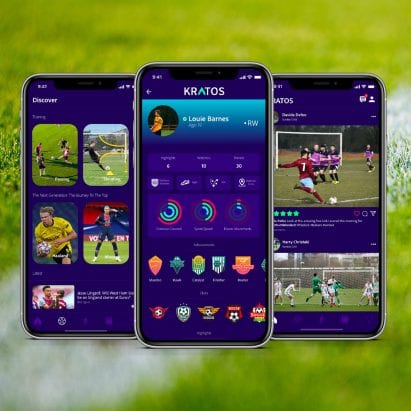
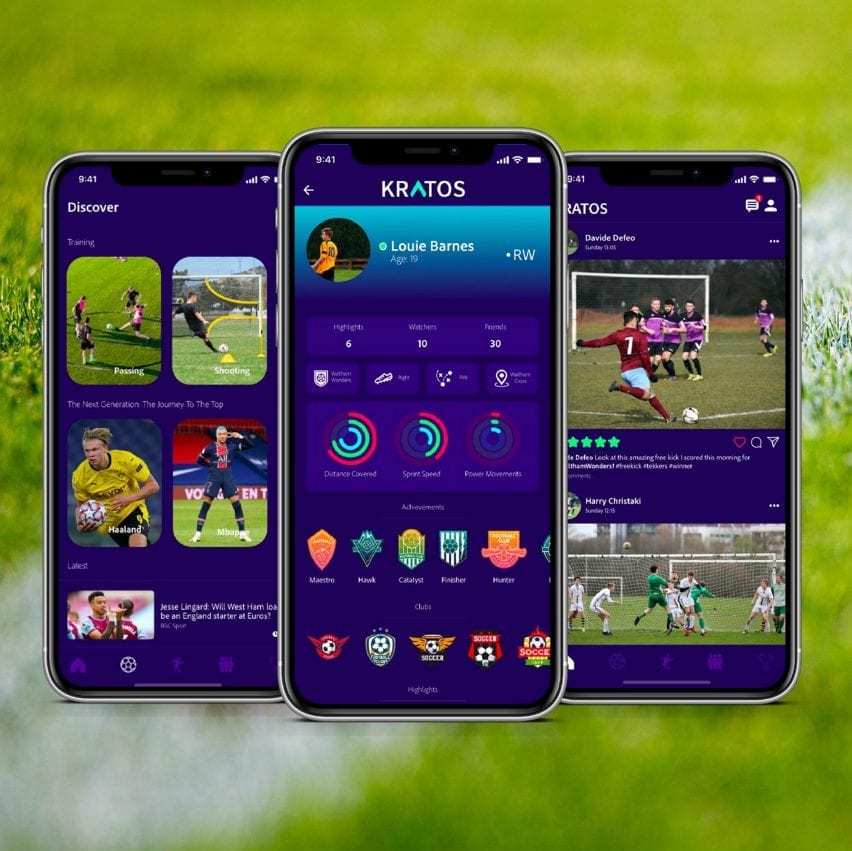
A car-based AI that gives users personalised travel updates and an affordable device that analyses football player's performances are included in Dezeen's latest school show from students at Middlesex University.
Also featured is a subtle distraction game aiming to help people with chronic pain reduce their discomfort and a project that tackles the issue of 'fast furniture' by equipping people with the tools to make their own.
School: Middlesex University, Faculty of Science and Technology
Courses: BA Product Design and BEng Product Design Engineering
Tutors: Kate Herd, Andy Bardill, Wyn Griffiths, Ahmed Patel, Neil Melton, Dean Brown, Patrick Jordan, Brendan Walker, Peter Wong and Tom Stables
"Product Design and Product Design Engineering at Middlesex University are practice-based programmes, focused on employability. Both the BA and BEng programme are driven by our passion for understanding people and technology, exploring innovative solutions driven by real opportunities and addressing challenges faced by both industry and society."
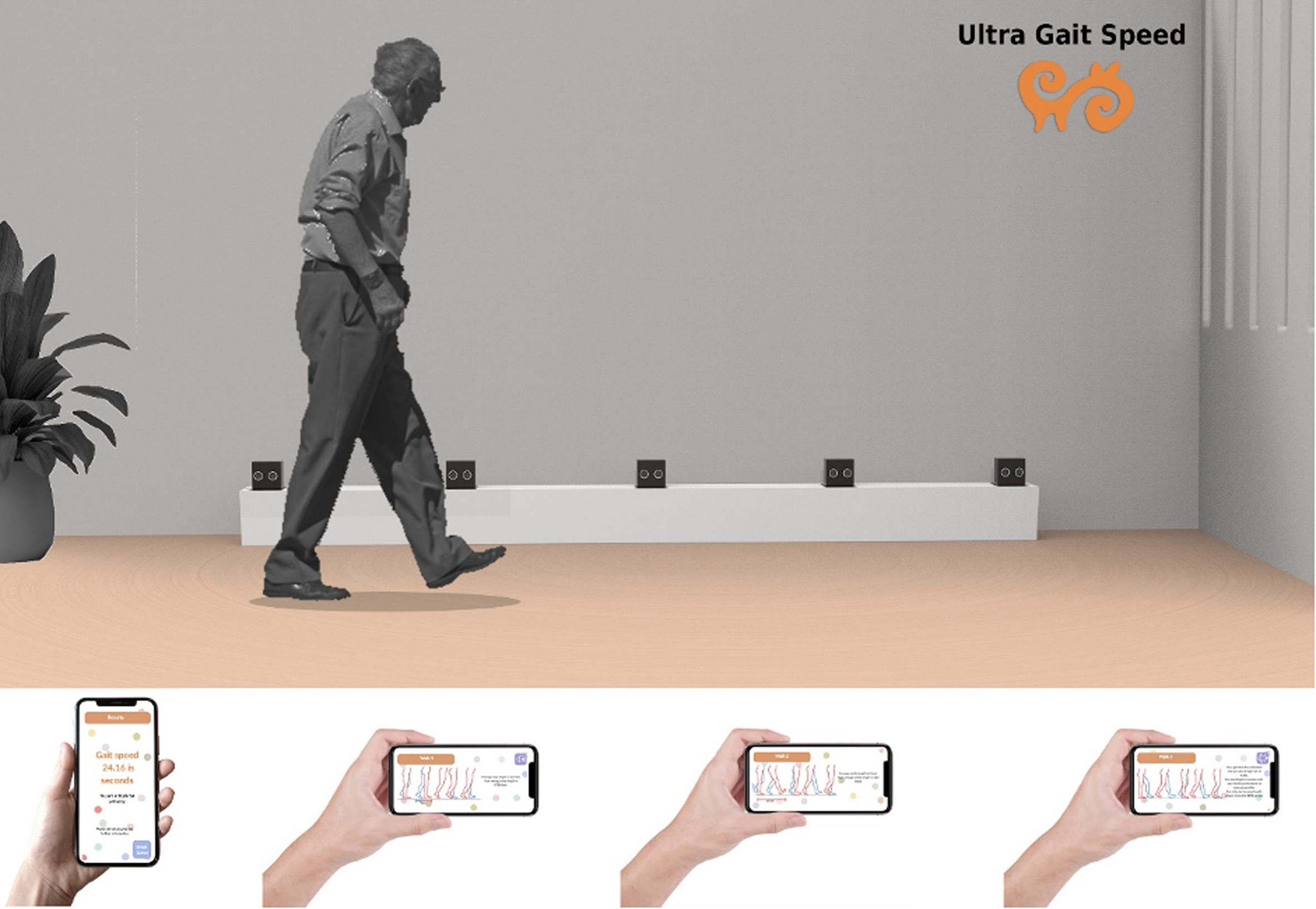
Ultra-Gait Speed by Demi Banjo
"Frailty is a geriatric condition. One of the main diagnosis methods is a Gait Speed Test, which measures how long it takes a patient to walk a distance of four meters.
"Ultra-Gait Speed is a home-based gait speed measurement device. An app accompanies the device and uses graphics to present the user with their results.
"The device allows patients to gain an understanding of their health. It enables frail and pre-frail patients to monitor their health, share data with medical professionals and make preventative interventions to delay the onset of geriatric frailty."
Student: Demi Banjo
Course: BEng Product Design Engineering
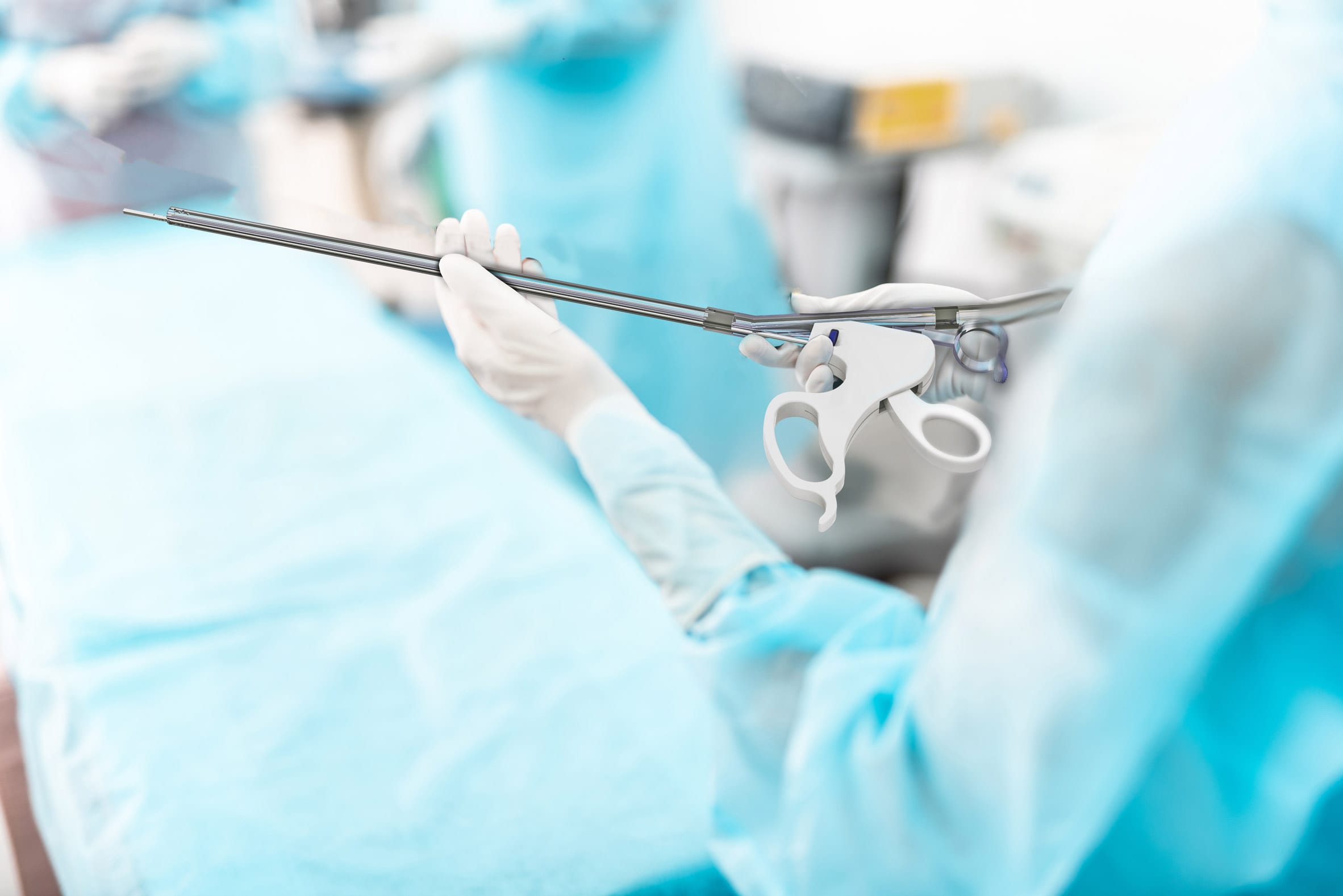
Laparoscopic Gallstone Removal System by Lazaros Efthymiadis
"Gallbladder perforation occurs in 36.1 per cent of patients who undergo laparoscopic elective cholecystectomy. Retrieving the lost gallstones is a stressful situation for the surgeons and significantly increases operation time.
"The Laparoscopic Gallstone Removal System gives the doctor the ability to quickly gather every stone using one device and avoid any potential blockages. The device breaks the big stones into smaller ones, removes them from the cavity using suction and stores them in a filter, protecting the operation room central suction device."
Student:Lazaros Efthymiadis **
Course:** BEng Product Design Engineering
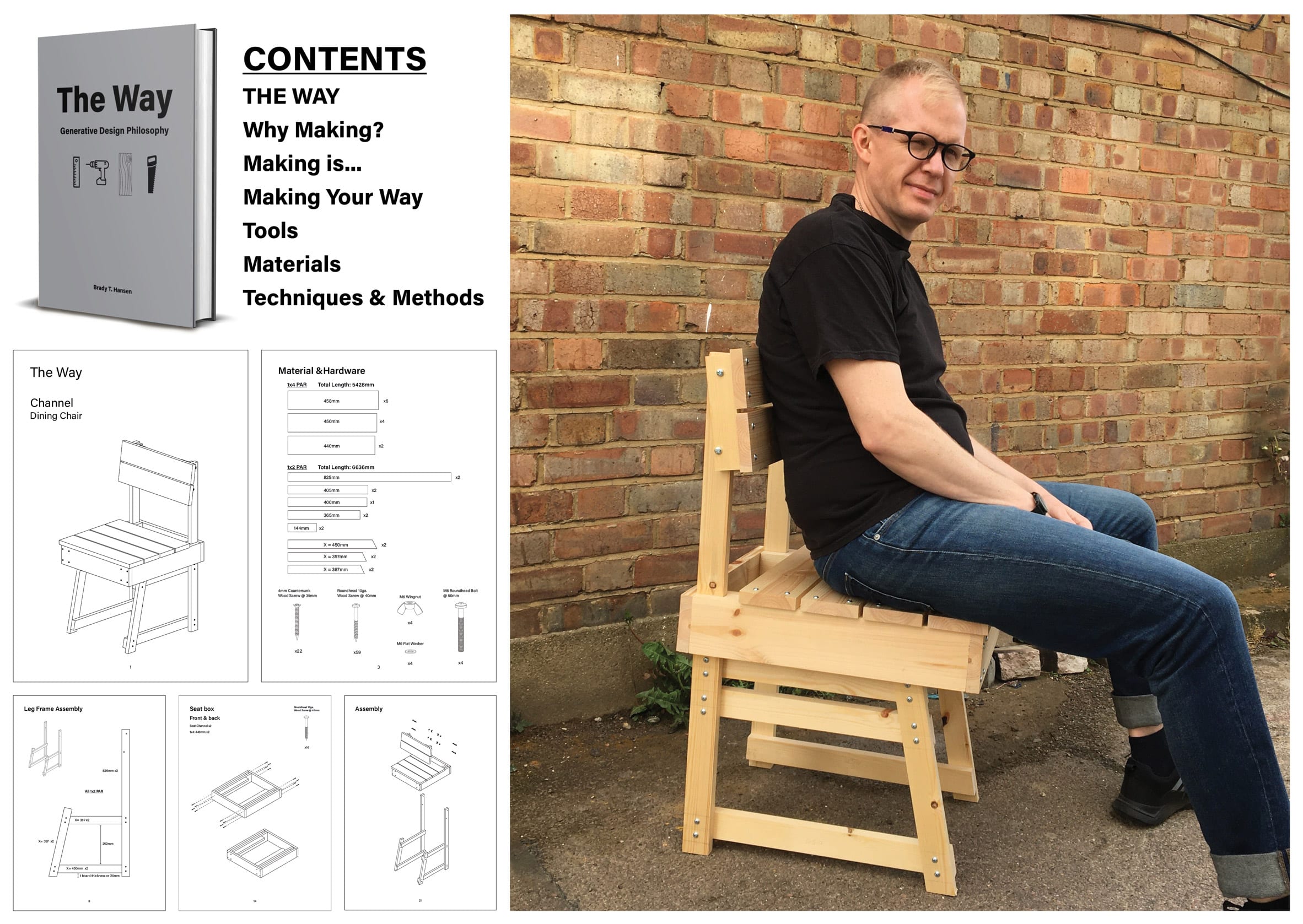
The Way: Generative Design Philosophy by Brady Hansen
"Fast furniture is having an irreversible impact on our planet, although many consumers have a desire to consume furniture more meaningfully.
"The Way provides a straightforward methodology using a simple set of tools to instruct people to make their furniture. Along with highlighting the positive impacts of making as a practice, The Way also gives guidance on making in small and shared living spaces, empowering any user to create rather than consume.
"The Way is a generative design philosophy designed to help people become makers and add more meaningfulness to their possessions."
Student: Brady Hansen **
Course:** BA Product Design ** **
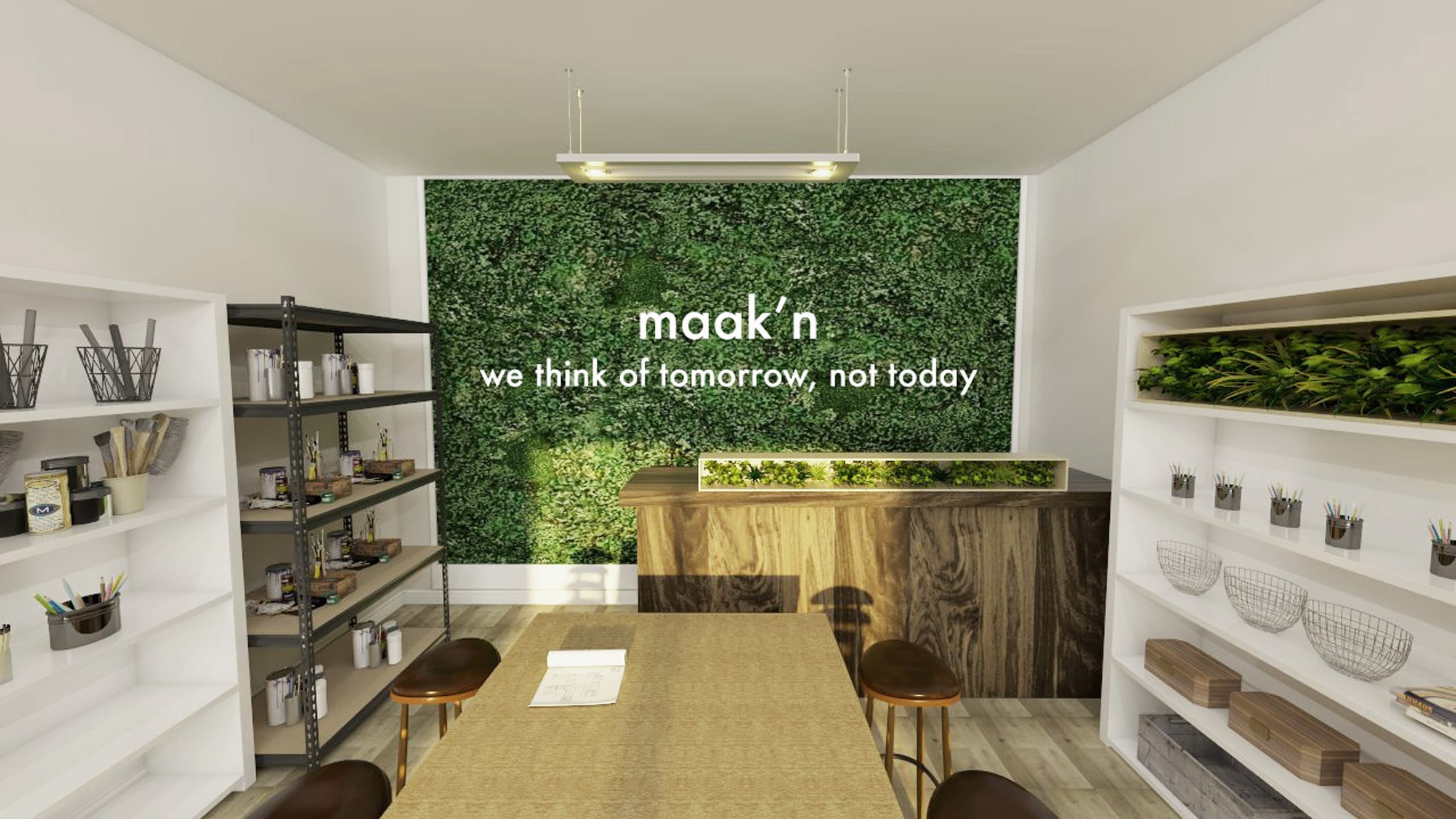
Maak'n by Basima Jaafar
"Maak'n is a stationery workshop that promotes and encourages active participation in sustainable, interchangeable and eco-friendly stationery. The workshop will create a new community for stationery lovers to make, customise and learn how we as consumers can change our habits and lifestyles to help improve the Earth through small and big steps."
Student:Basima Jaafar **
Course:** BA Product Design ** **
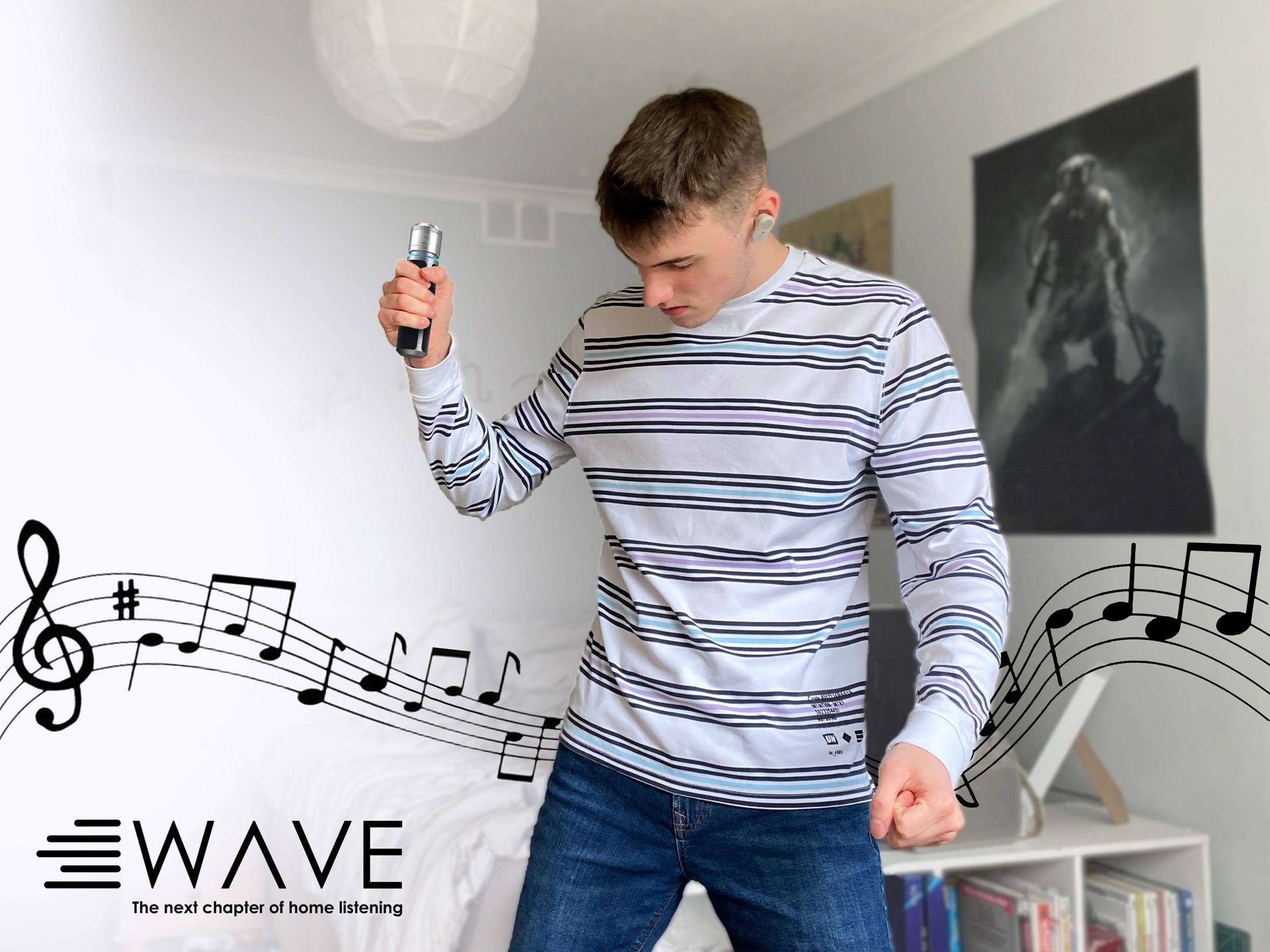
Wave: The next chapter of home listening by Tom Milward
"Music listening has faded into the background. Wave is a device that brings music back into the foreground, creating a mindful and enhanced listening experience.
"Wave helps users to induce a flow state, getting them into a relaxed state of mind so that the music becomes their focus. It will help users engage and immerse themselves, give them more control, and allow them to explore and interact with their music through various parameters.
"These parameters include reverb, band-pass filter and bass/treble, each controlled through different gestures. Additionally, wave connects to music playing applications on mobile devices via Bluetooth."
Student:Tom Milward **
Course:** BA Product Design ** **
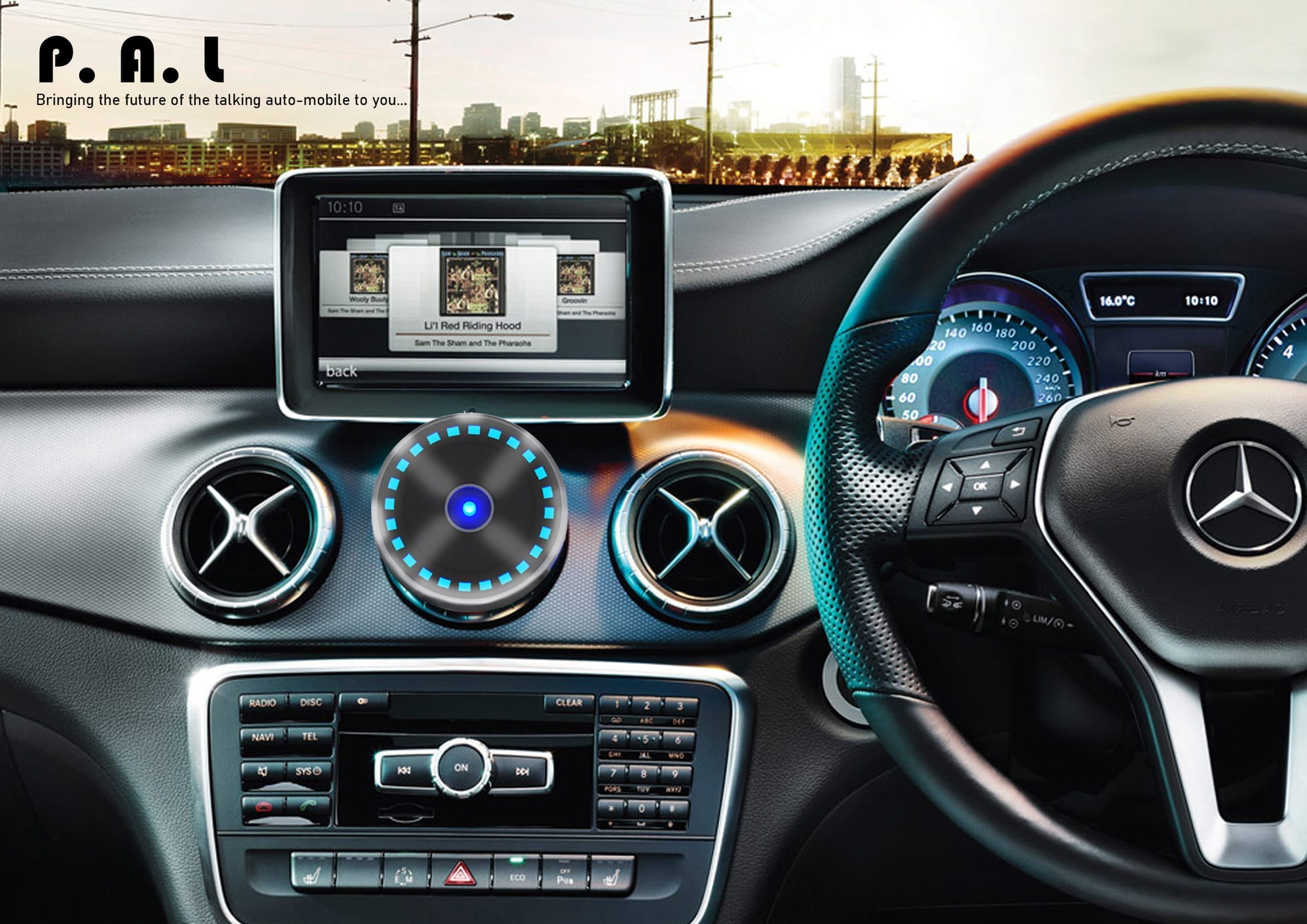
P.a.l: Bringing the future of the talking automobile to you by Ibrahim Javid
"Your car assistant from the future. A talking and living AI that communicates with the driver through audible suggestions and a visual light display.
"P.a.l gives you updates on your car's current performance, makes you aware of hazards around you, and gives you personalised updates on places to visit while travelling.
P.a.l provides comfort and companionship for those driving alone and enhances your driving experience."
Student:Ibrahim Javid **
Course:** BEng Product Design Engineering
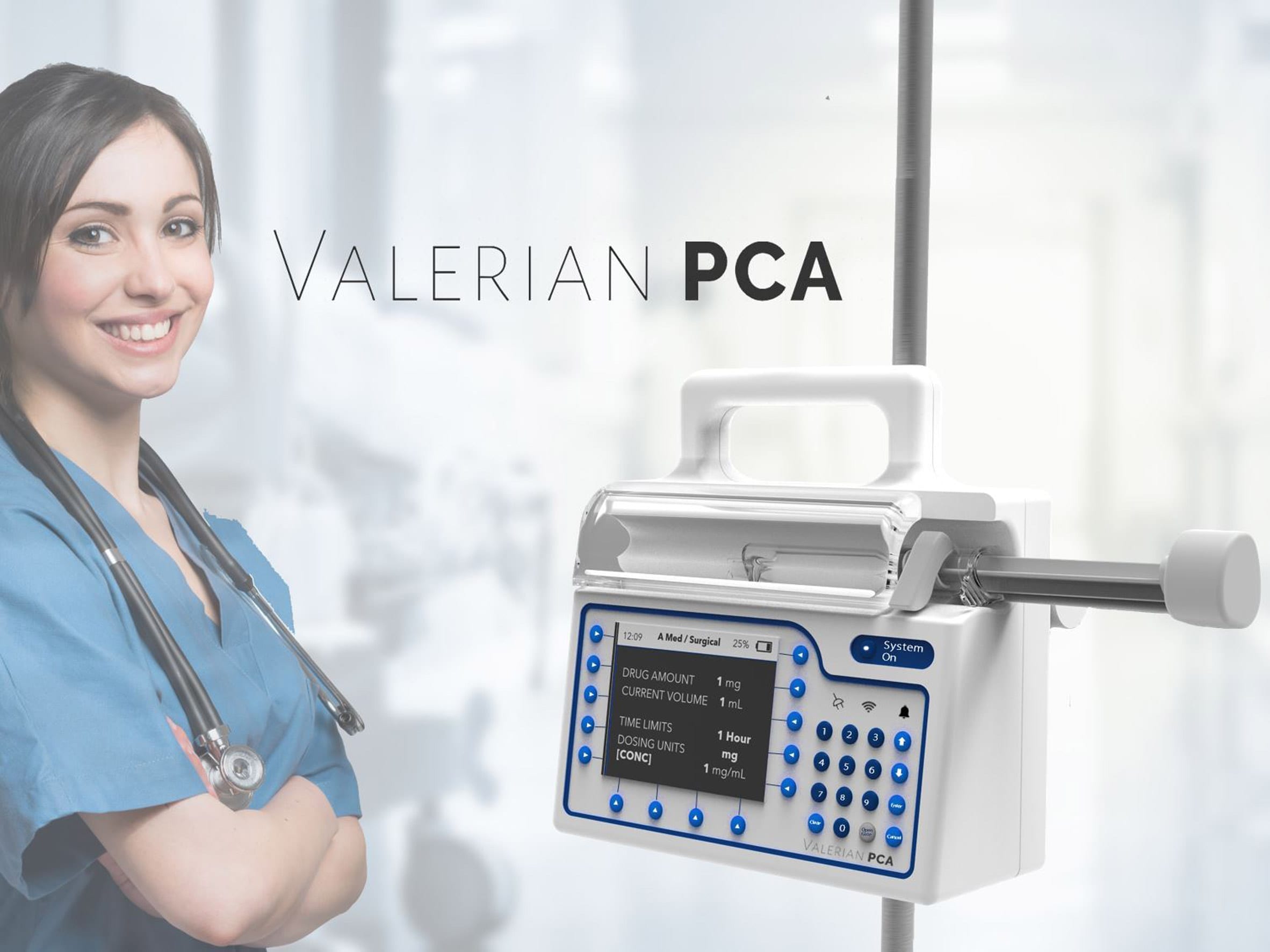
Valerian PCA Pump by Vanessa Mugari
"Valerian is a device that gives patients the power to control their pain through the simple press of a button. The computerized Patient-Controlled Analgesia pump (PCA) contains a syringe of pain medication prescribed by a doctor connected directly to a patient's IV line.
"Its user interface and simple programming steps significantly reduce the risks of human errors, which result in the overdose and underdose of patients."
Student:Vanessa Mugari **
Course:** BEng Product Design Engineering
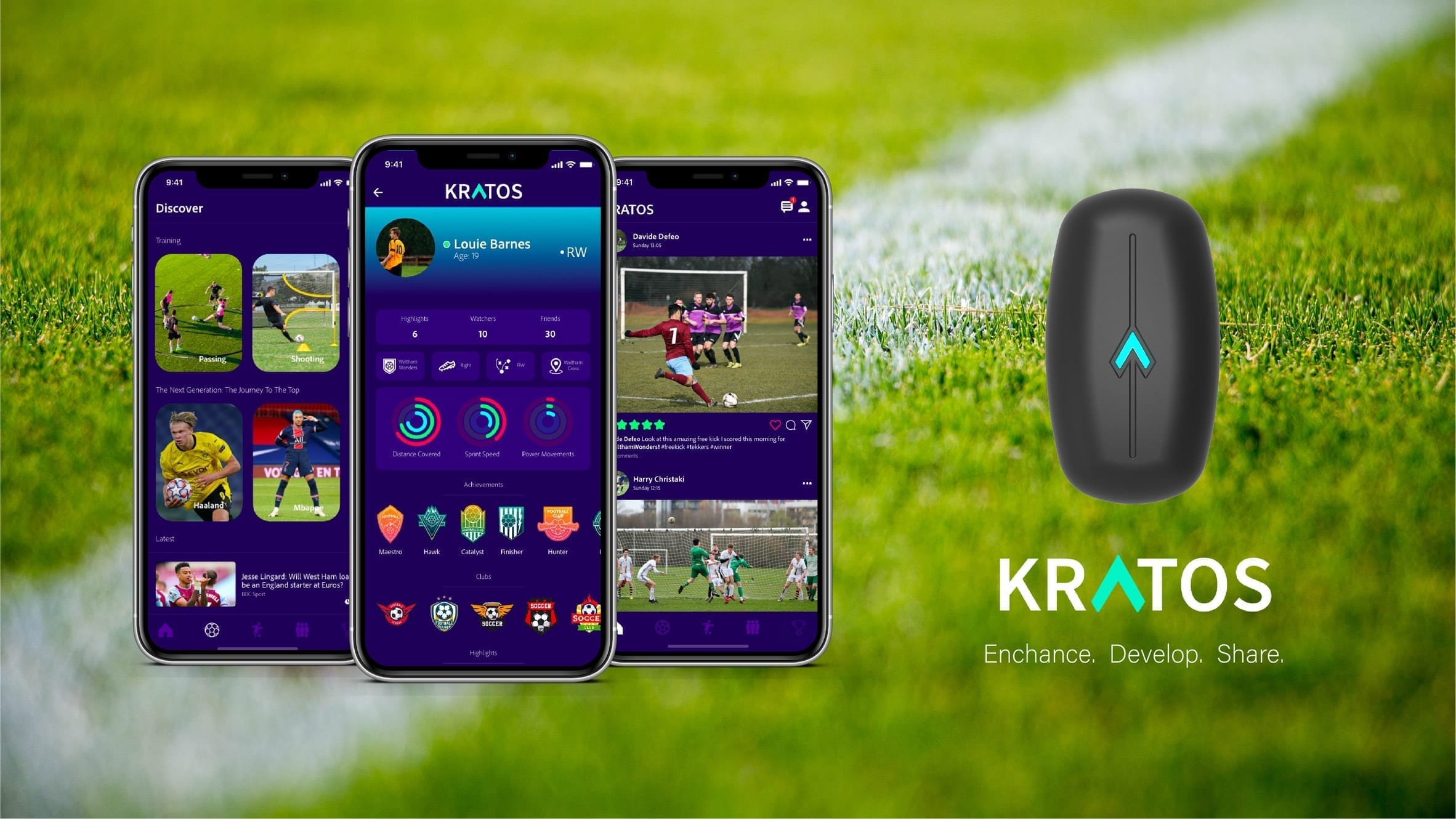
Kratos: Enhance. Develop. Share by Luigi Palumbo
"Football is becoming heavily data-driven – it's all about stats, and these can determine a player's success or failure. Pro-level players use this data to analyse performances, reduce injury and understand themselves as a player. Kratos makes this technology more affordable to the lower level and recreational players.
"The design is made up of a physical device located on the back. It will utilise community manufacturing approaches to lower the cost, making it more accessible to amateur players. In addition, the device will be accompanied by a social networking app that will allow players to share this data in meaningful ways."
Student:Luigi Palumbo **
Course:** BEng Product Design Engineering
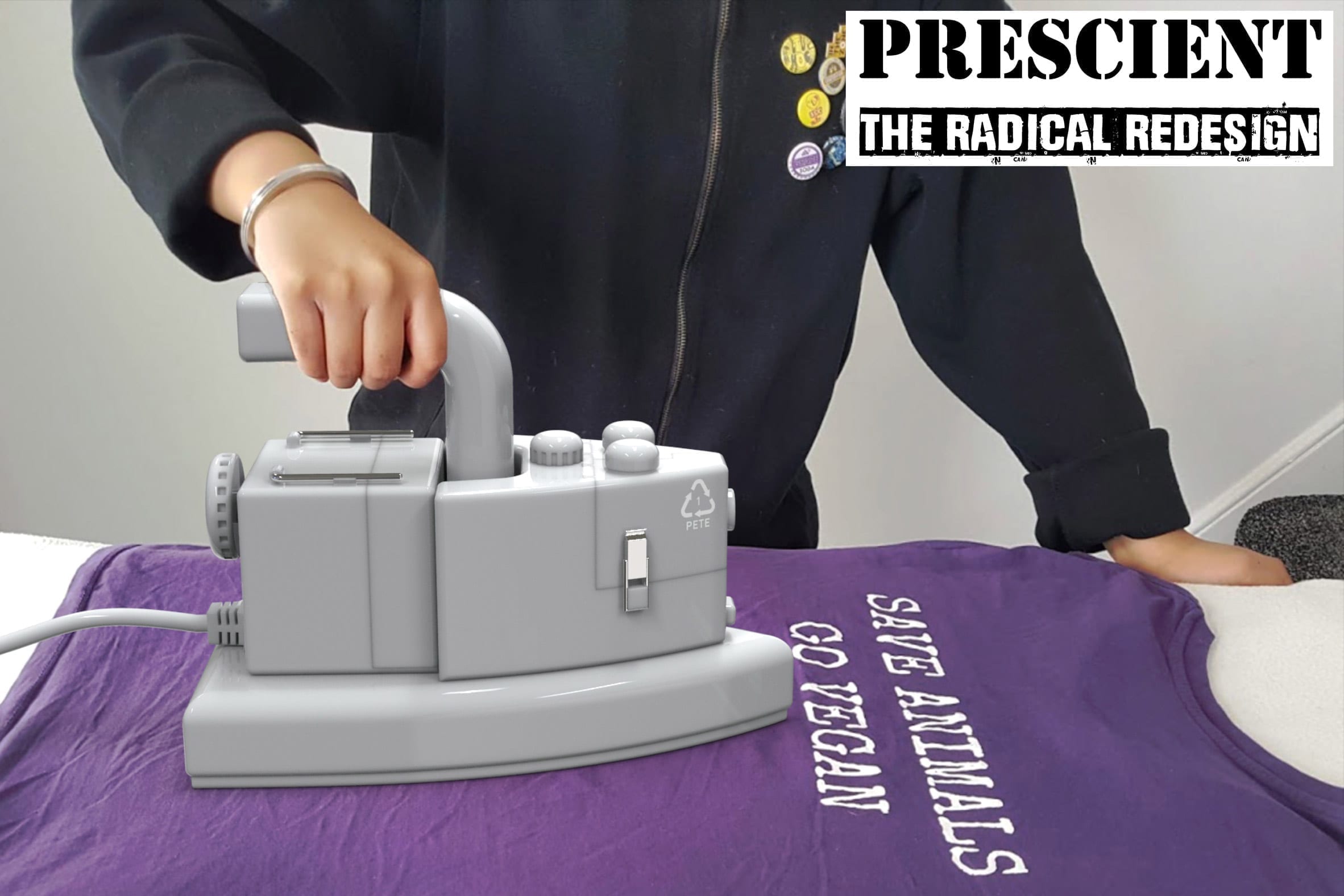
Prescient: The Radical Redesign by Navpreet Singh
"Revisioning our relationship and use of consumer products by designing for behaviour change: Prescient is a philosophy, a manifesto, a set of instructions, and a lens on sustainable living, all in one.
"It works to create meaningful, readable consumer products with cradle-to-cradle sustainable thinking embedded in every aspect of design and manufacture through a visual language that speaks directly of the underlying philosophy.
"The demonstration product – a clothes iron – illuminates that functional modularity of the product and helps users understand how to repair and replace any parts that fail over time, extending the lifecycle of the whole system."
Student:Navpreet Singh **
Course:** BEng Product Design Engineering
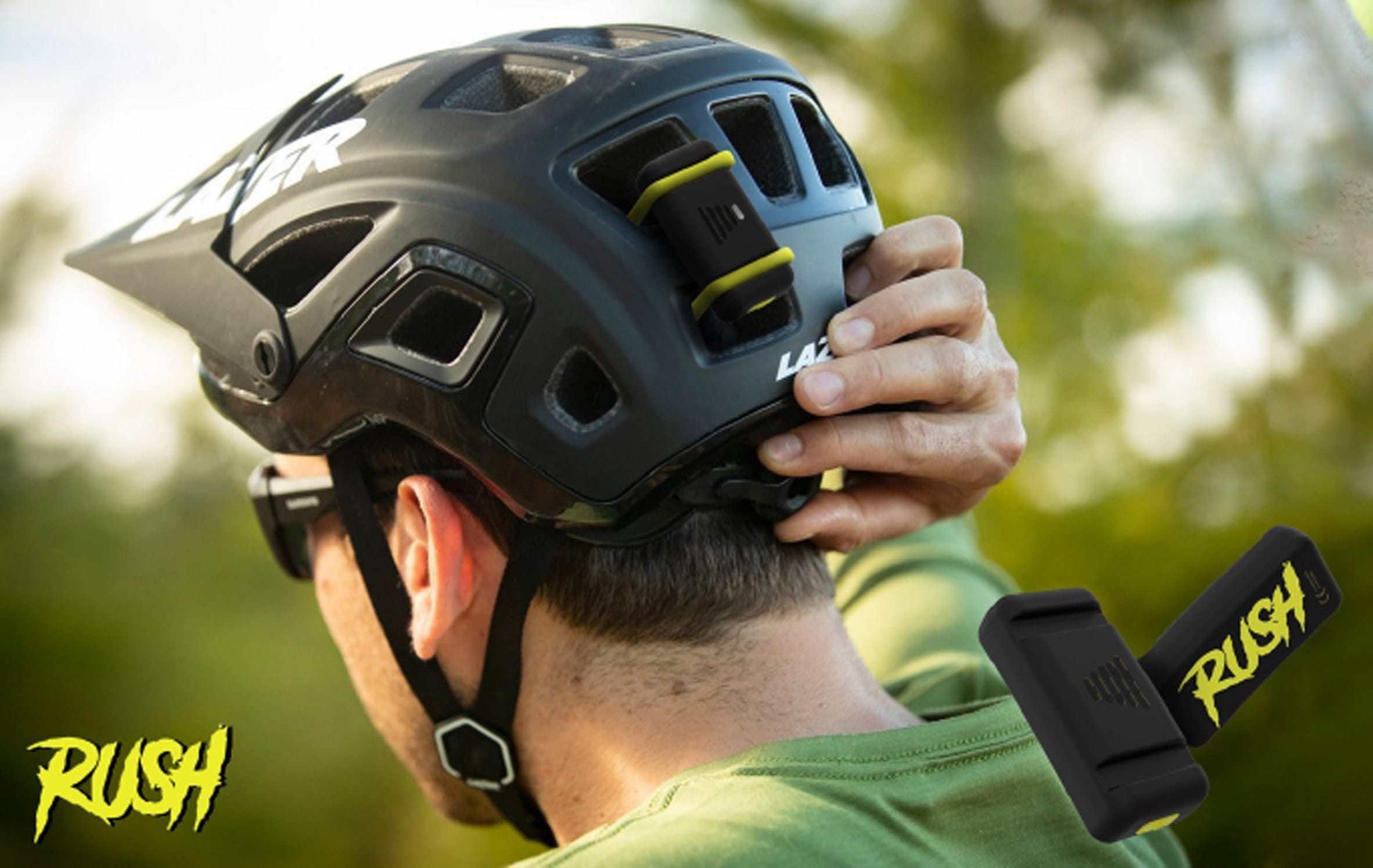
Rush: Explore Your Data by Ralph Pauling
"Rush uses accelerometer arrays to capture new forms of cycling data enabling underrepresented users to visualise and quantify their cycling exploits.
"Rush can measure 'air time', visualising the aerial ballet of a skilled BMX rider, cornering speed and banking angle achieved during a bike race, also known as a crit. Should a bike ride go a little pear-shaped, the design can tell the user if they may have suffered a concussion."
Student:Ralph Pauling **
Course:** BEng Product Design Engineering
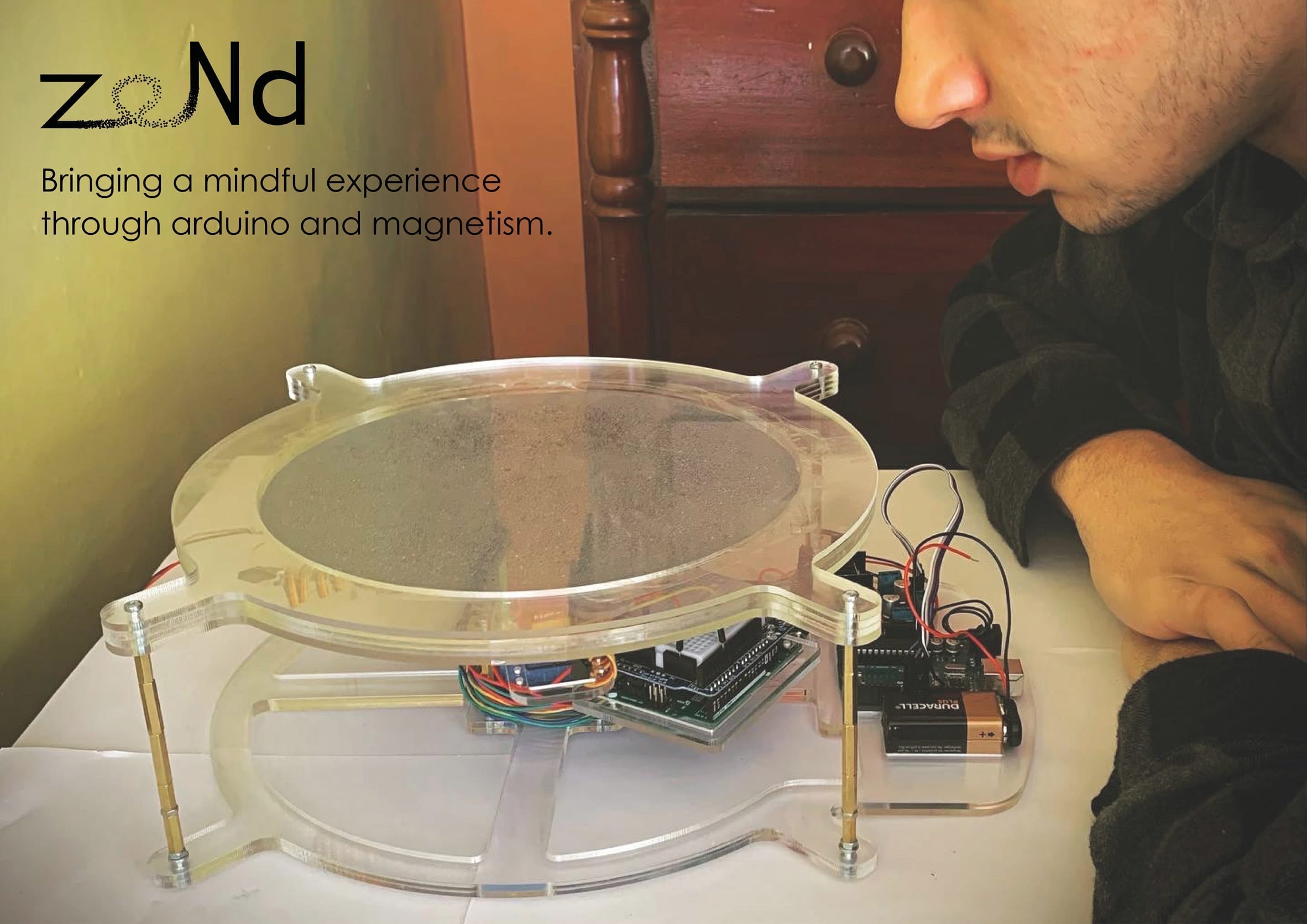
zeNd: Bringing a mindful experience through Arduino and magnetism by Joseph Salem
"This design asks: is play just for children? Once we reach adulthood, should we stop? Playtime, even for adults, has many benefits. ZeNd is a toy and construction kit for adults that provides a mindful experience using Arduino and magnetism, improving the user's wellbeing.
"The toy creates visuals on Iron filings – a metal powder – that react to magnetic fields. The toy creates a mindful experience by immersing the user in building the device and enabling them to feel 'in the moment' as they watch the playful patterns unfold, relieving stress and improving concentration."
Student:Joseph Salem **
Course:** BEng Product Design Engineering
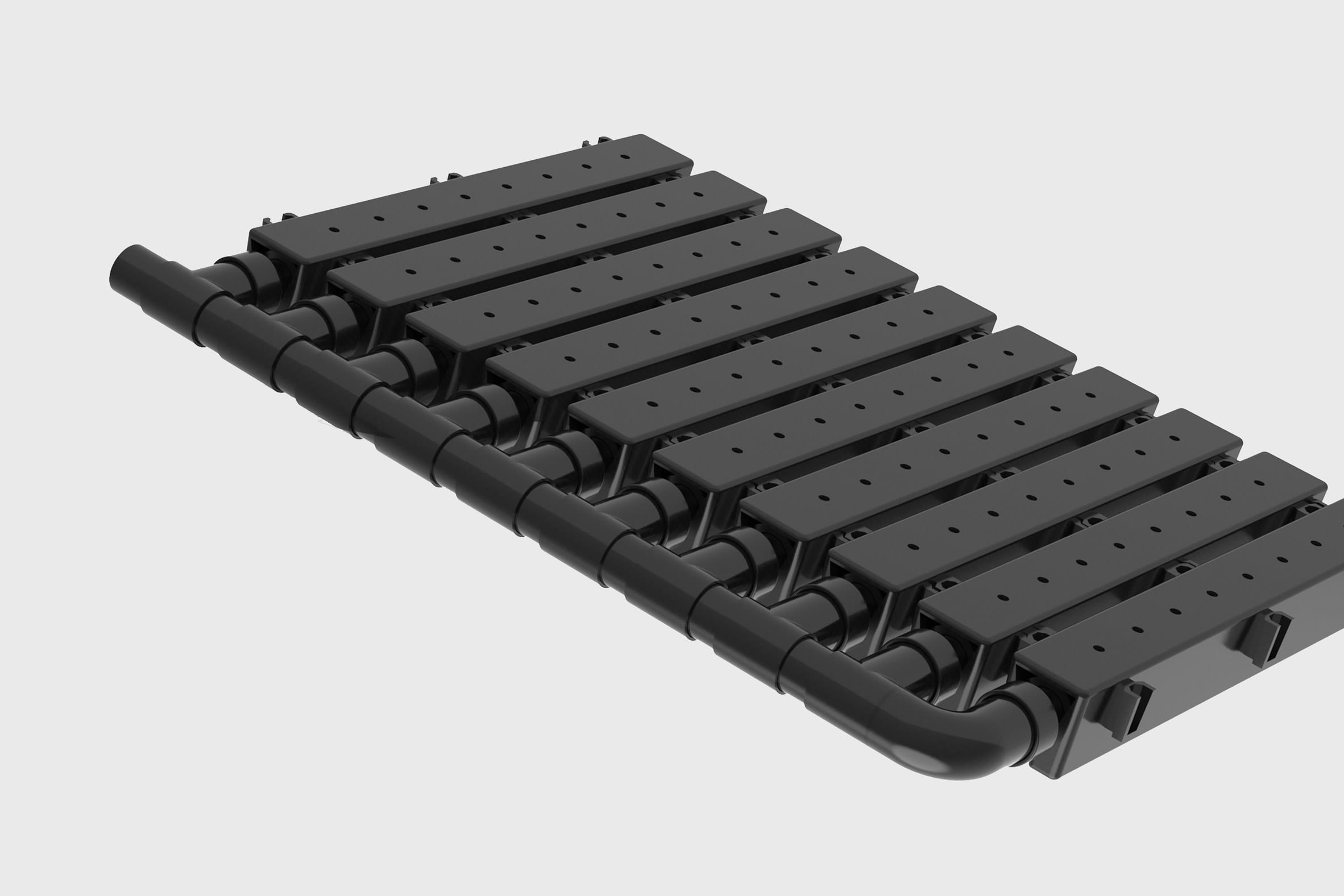
Smartbed: Innovative laser cutter vacuum bed technology by Sujinthan Sureshkumar
"Laser cutters have become the go-to machine for cutting a wide range of materials with speed and repeatable accuracy. Holding fragile materials can be difficult and involves typically expensive and inefficient vacuum beds.
"This new bed provides a 'smart', efficient and cost-effective way to hold thin sheet materials on small laser cutters using an innovative air-flow and valve matrix."
Student:Sujinthan Sureshkumar **
Course:** BEng Product Design Engineering
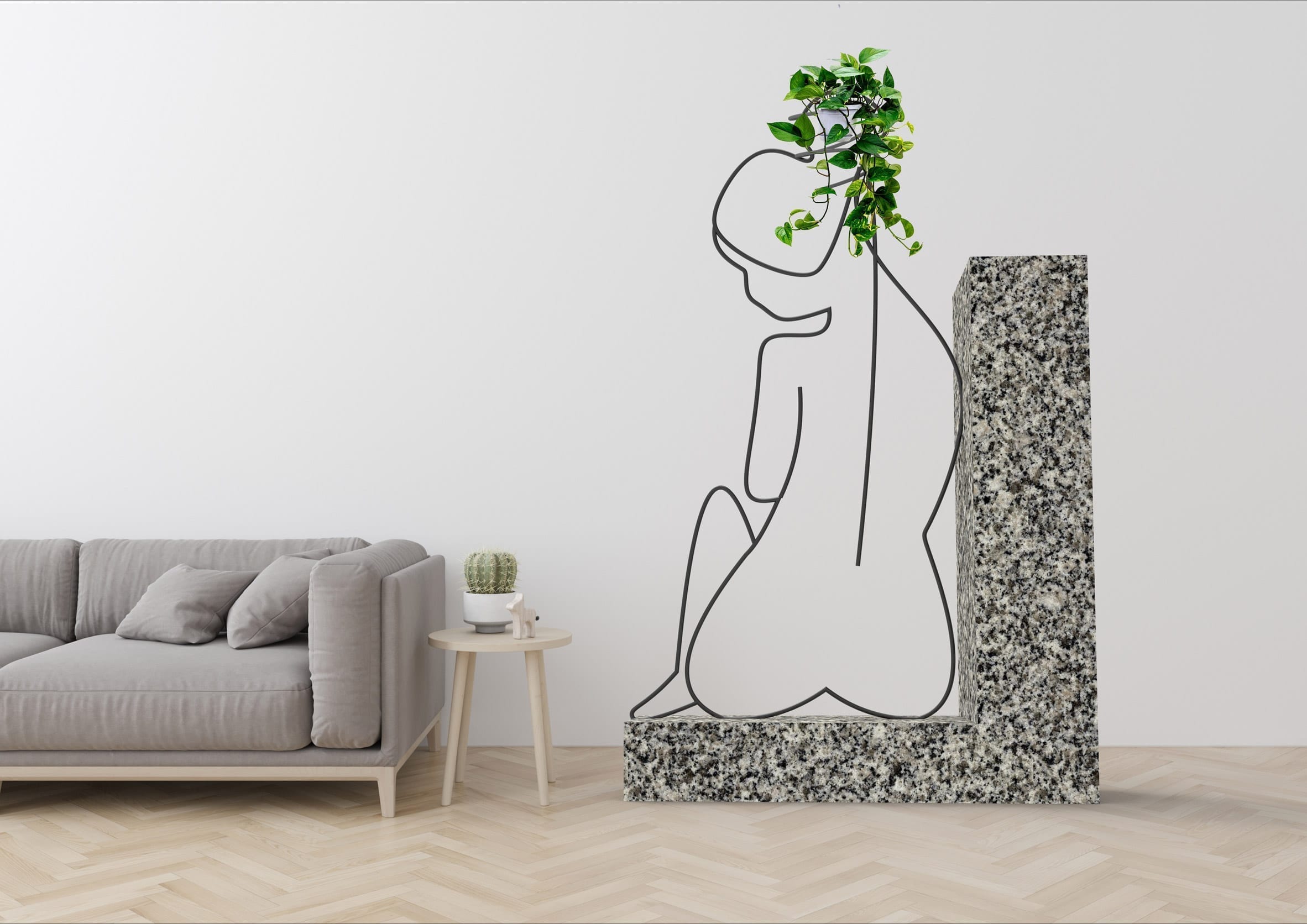
Self-growing Art by Eliska Ticha
"Plants and flowers have a positive effect on our mental health and help refresh our internal environments. Their ever-changing growth and beauty are enhanced through their inclusion in Self-growing Art, where plant life meets 3D illustration.
"The system, designed for custom installations, has a secure mounting and watering system as part of the construction. A continuous, fluid line provides the illustration, with growing plants symbiotically enhancing the symbolism."
Student:Eliska Ticha **
Course:** BA Product Design
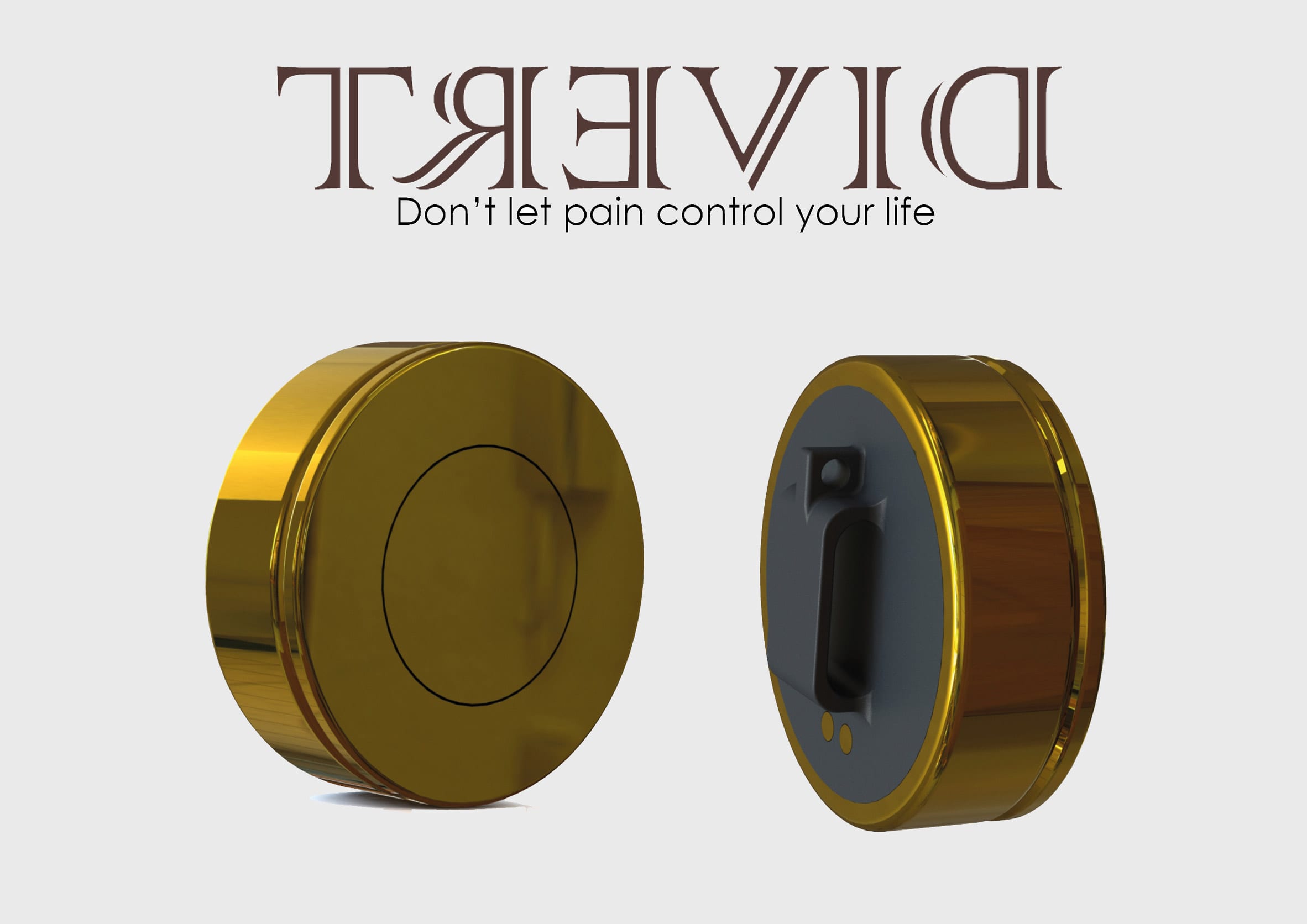
Divert: Don't let pain control your life by Elizabeth Whittall
"Divert is a new way for chronic pain sufferers to relieve their pain through distraction, in everyday settings, without drawing attention to the sufferer or distracting others around them. Divert uses haptic feedback to create different 'call and response games' between the user and the product to reduce pain.
"It could be used during a meeting, in educational settings, social gatherings, etc. When the user experiences pain symptoms, rather than leaving the room or distracting others, they can push down on the device and initiate the subtle distraction 'games'. Divert is a 'core and shell' system enabling the core to be worn as a bracelet, necklace, or keychain."
Student:Elizabeth Whittall **
Course:** BA Product Design
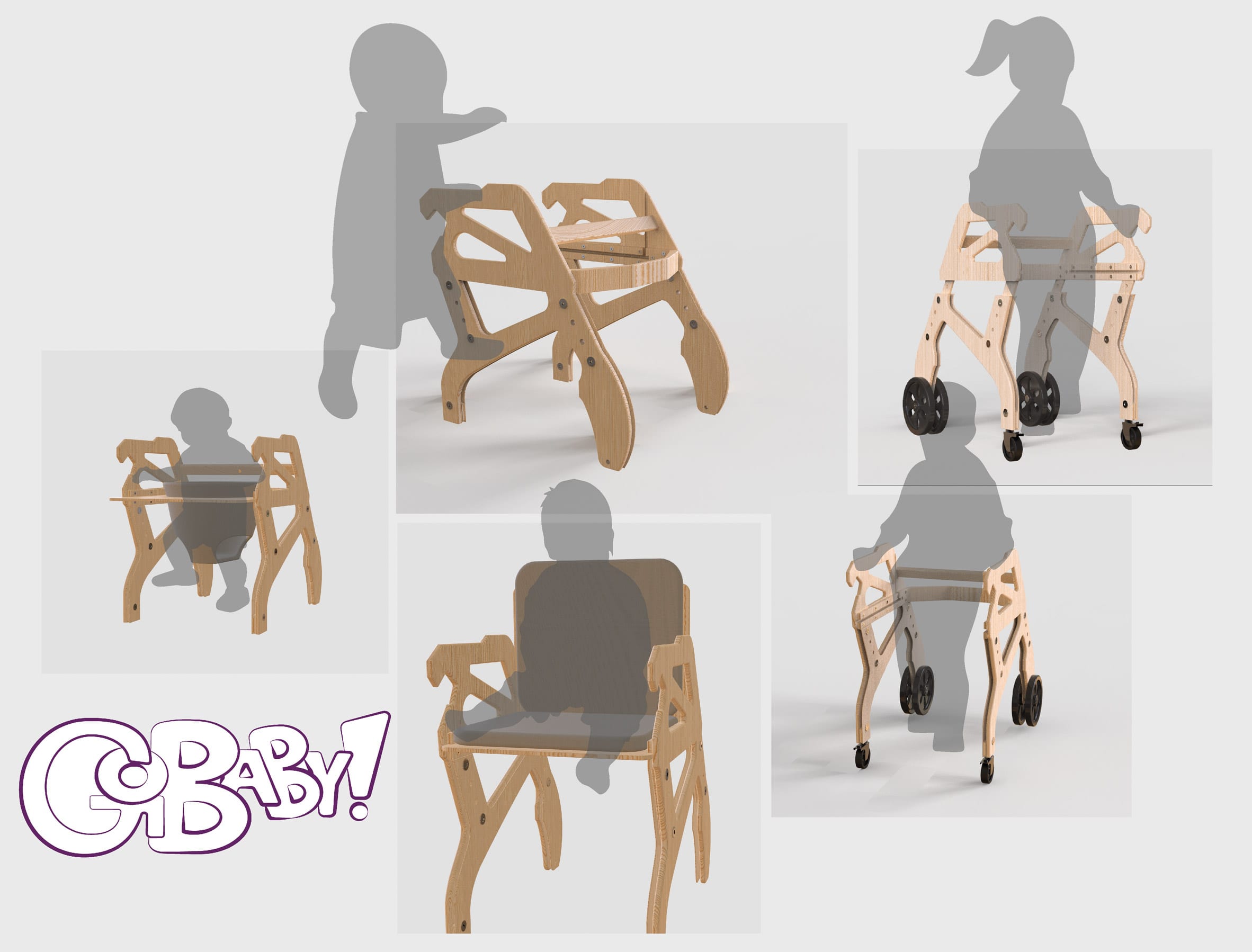
GoBaby by Jerusa Da Silva
"GoBaby! is a multifunctional piece of furniture for children with down syndrome and other additional needs. GoBaby! transforms into three products: a walking frame, a baby exersaucer and a chair, giving the child the opportunity to improve their gross motor skills in the comfort of their own home and at their own pace.
"GoBaby! will accompany your child as they grow, offering independence and supporting them in reaching key developmental milestones from six months to five years of age."
Student:Jerusa Da Silva **
Course:** BA Product Design
Partnership content
This school show is a partnership between Dezeen and Middlesex University. Find out more about Dezeen partnership contenthere.
The post Middlesex University unveils 15 projects from product design and engineering students appeared first on Dezeen.
#furniture #all #transport #design #products #technology #homeware #schoolshows #productdesign #designsforchildren #football